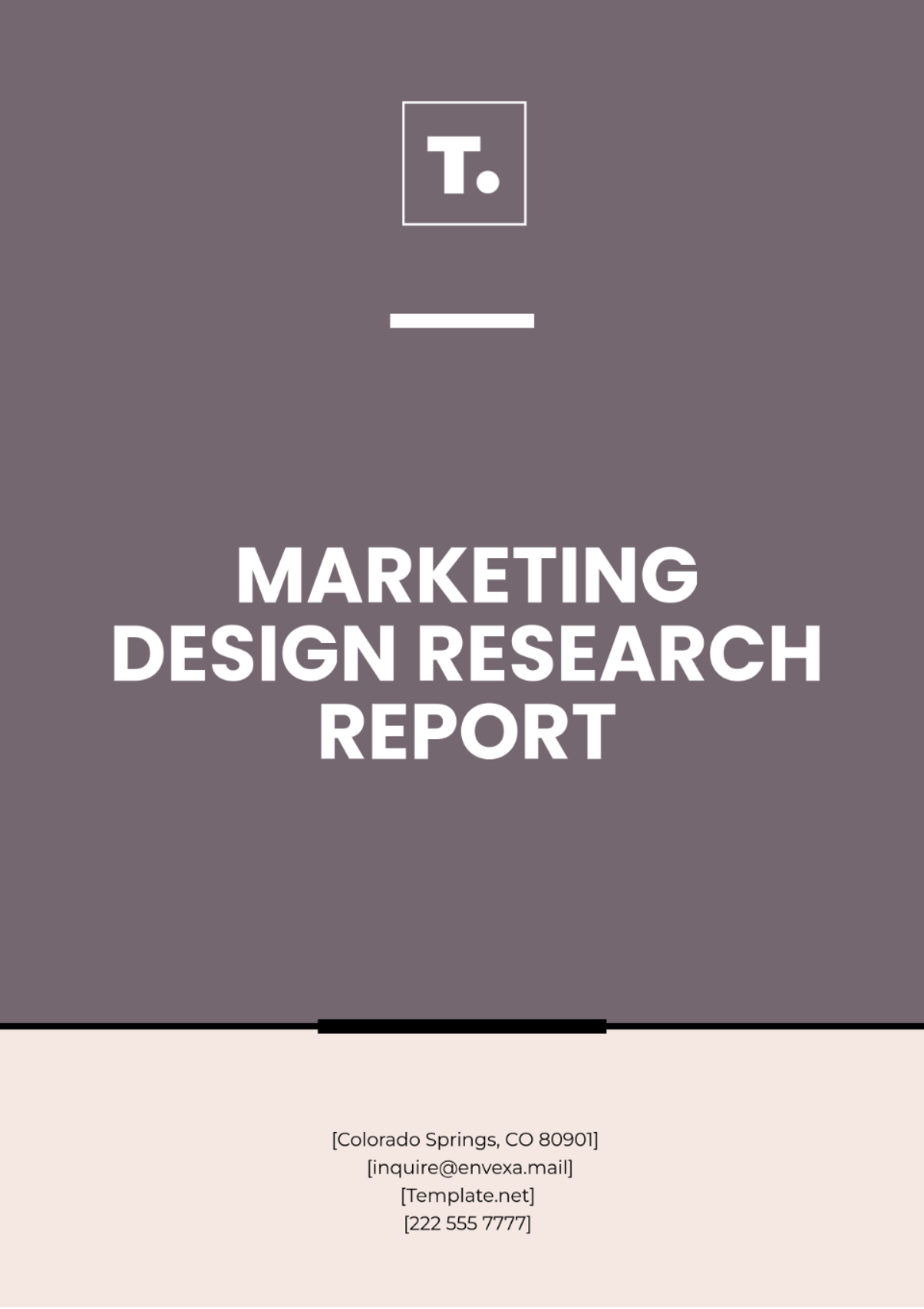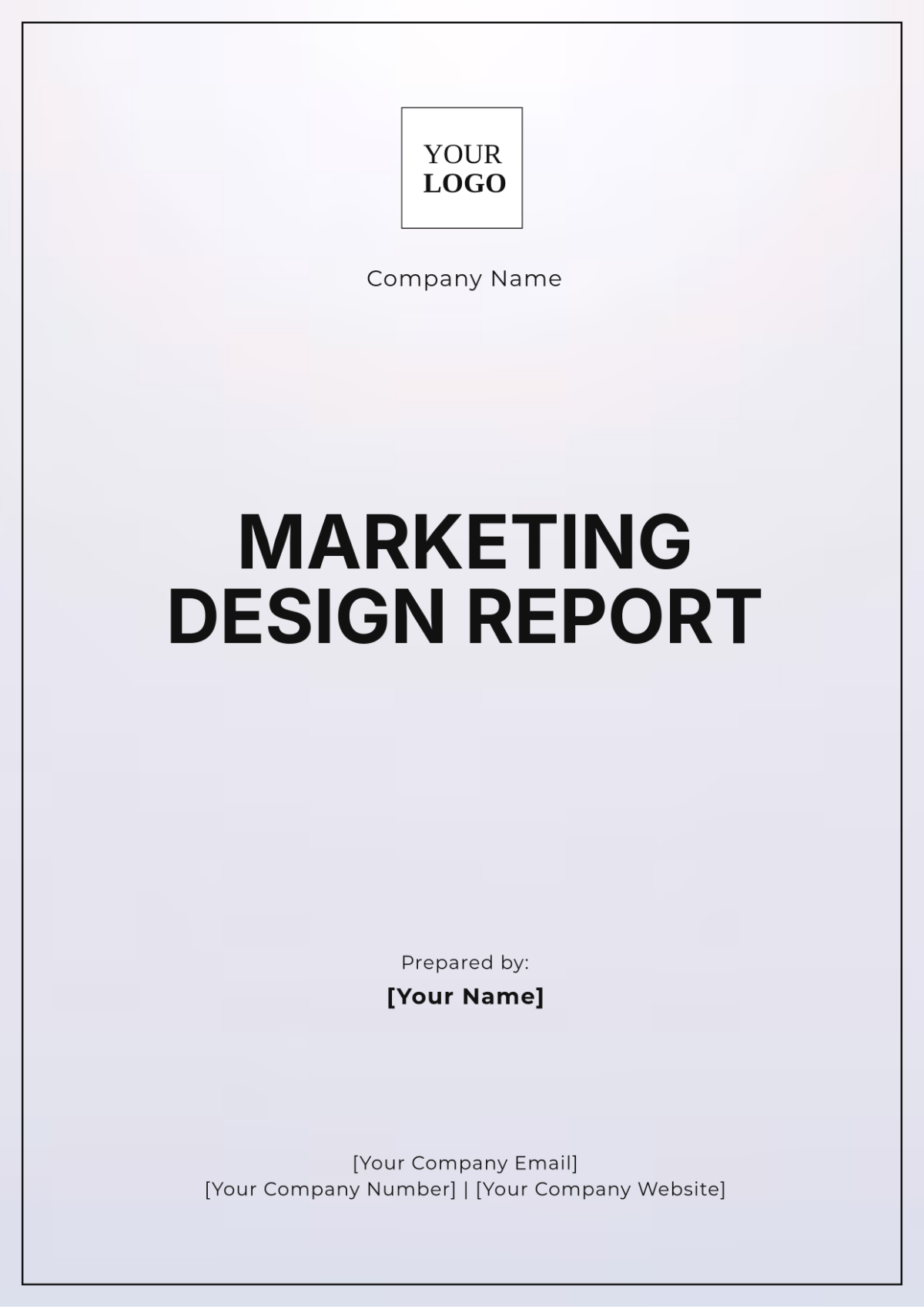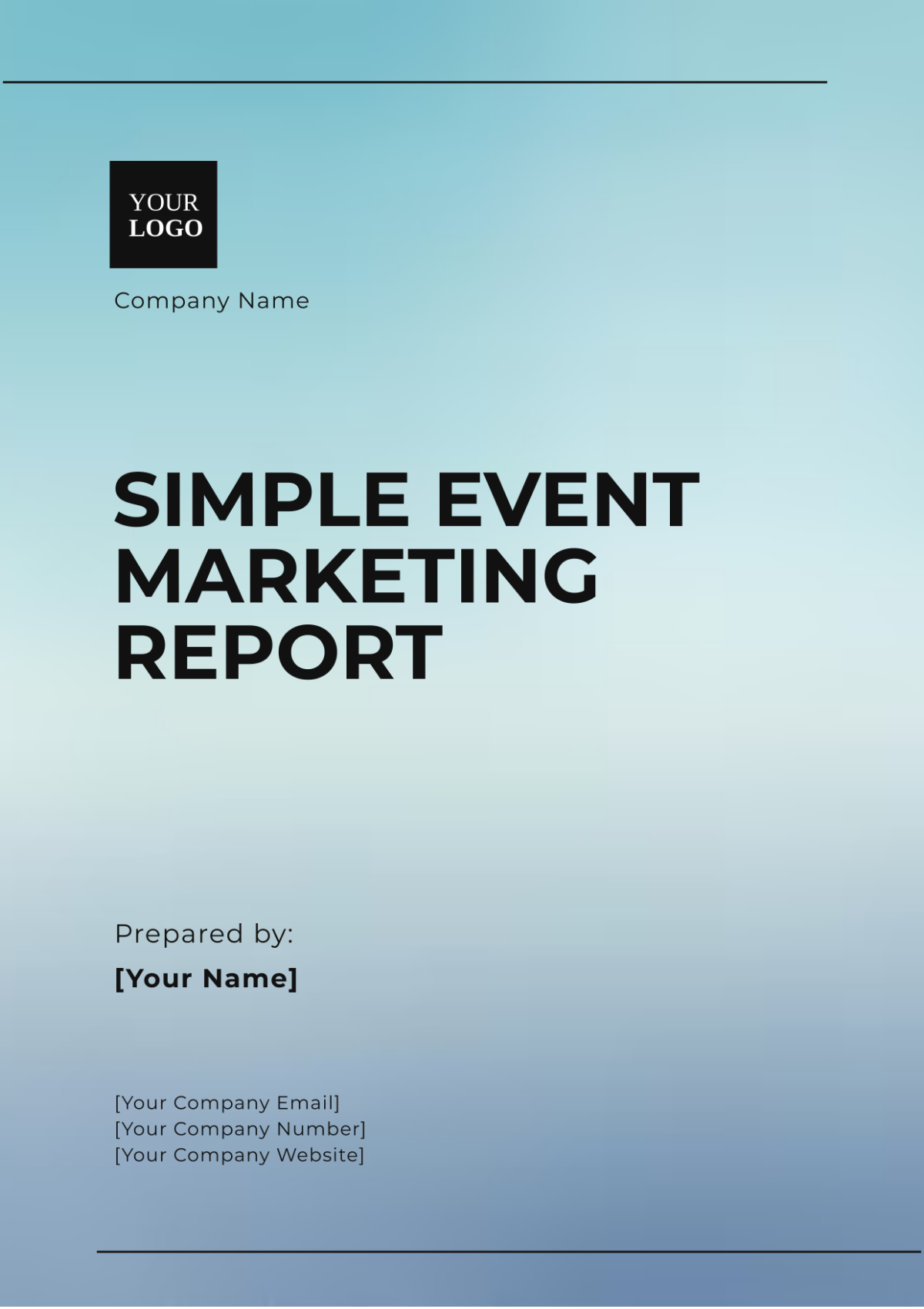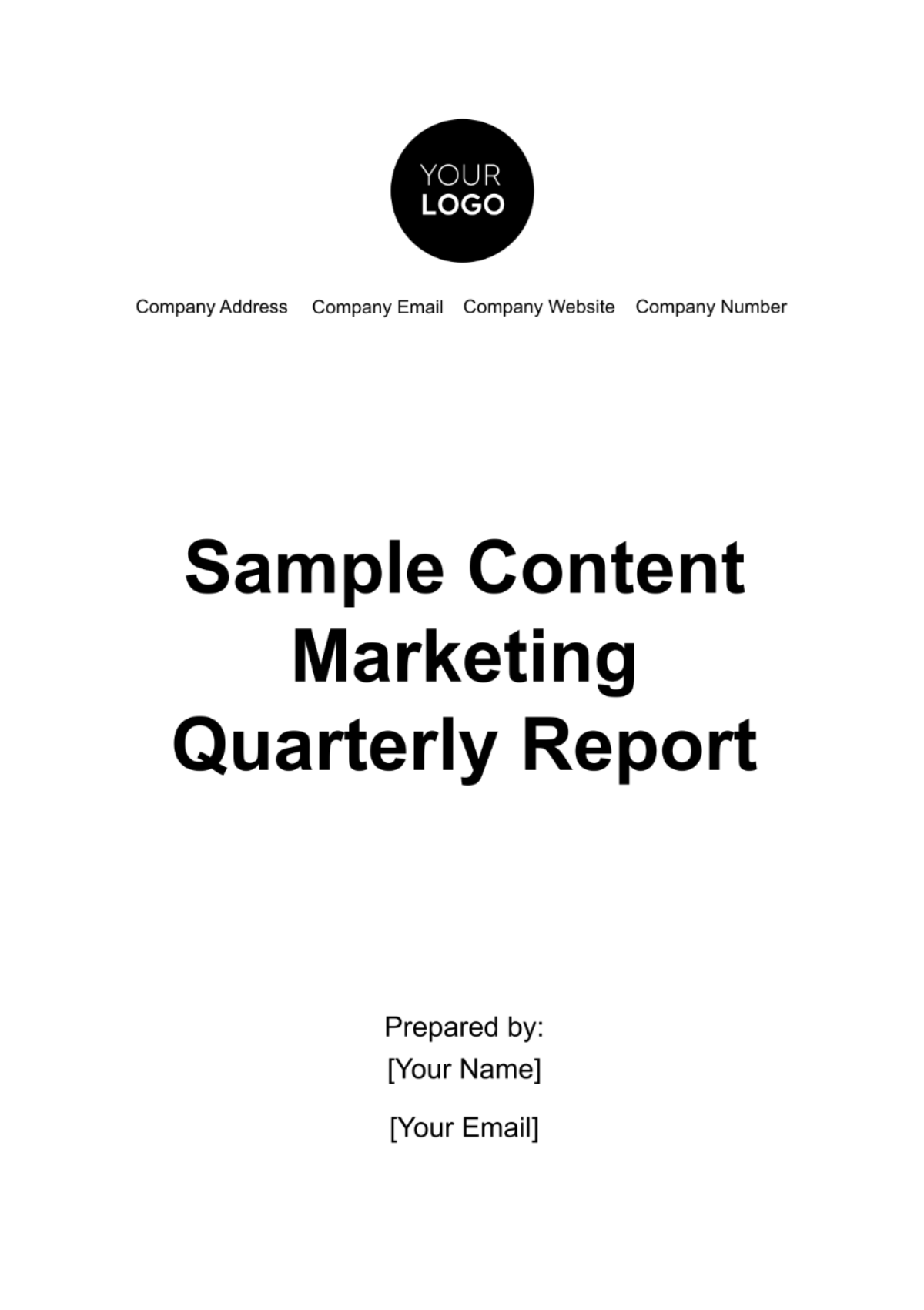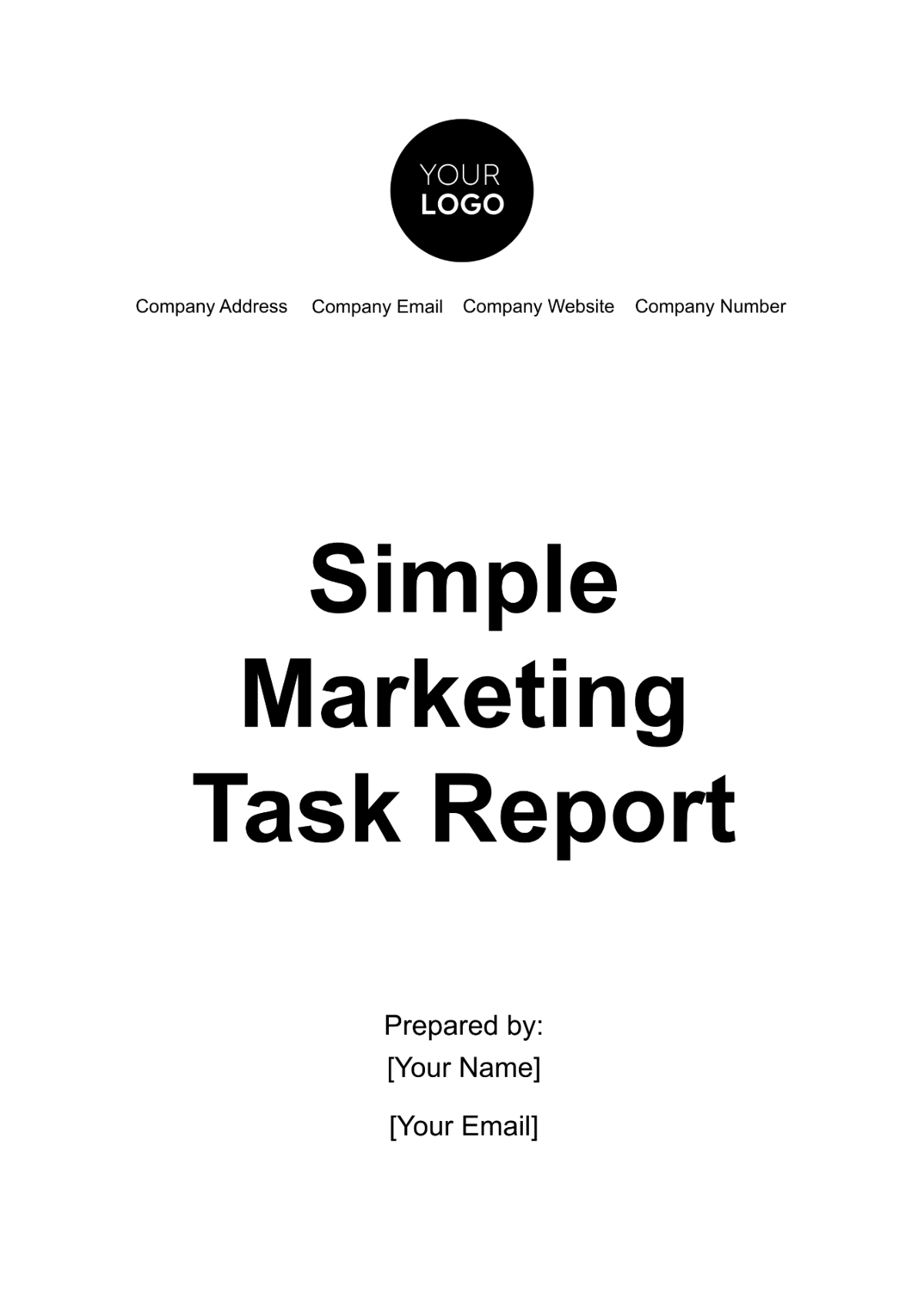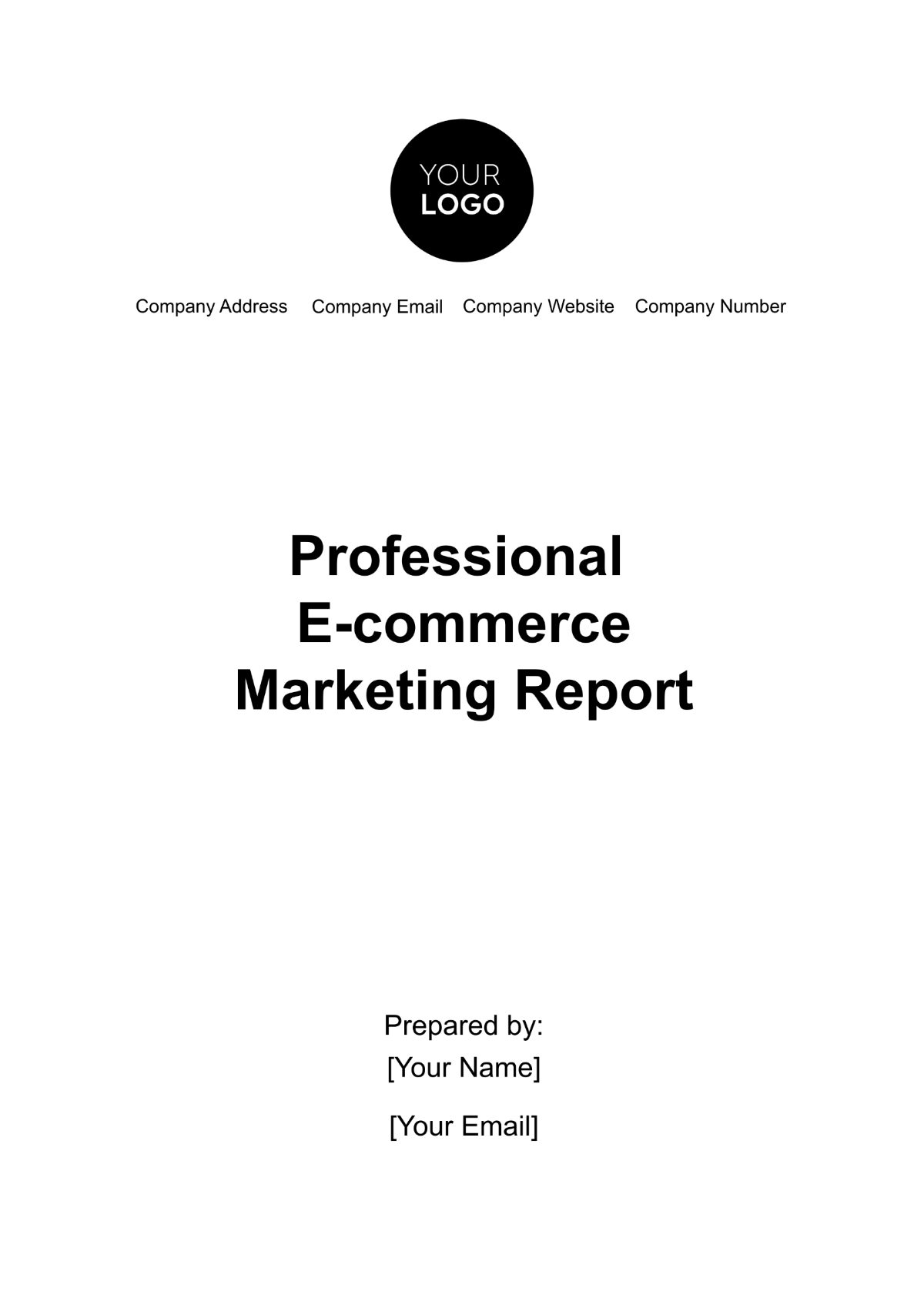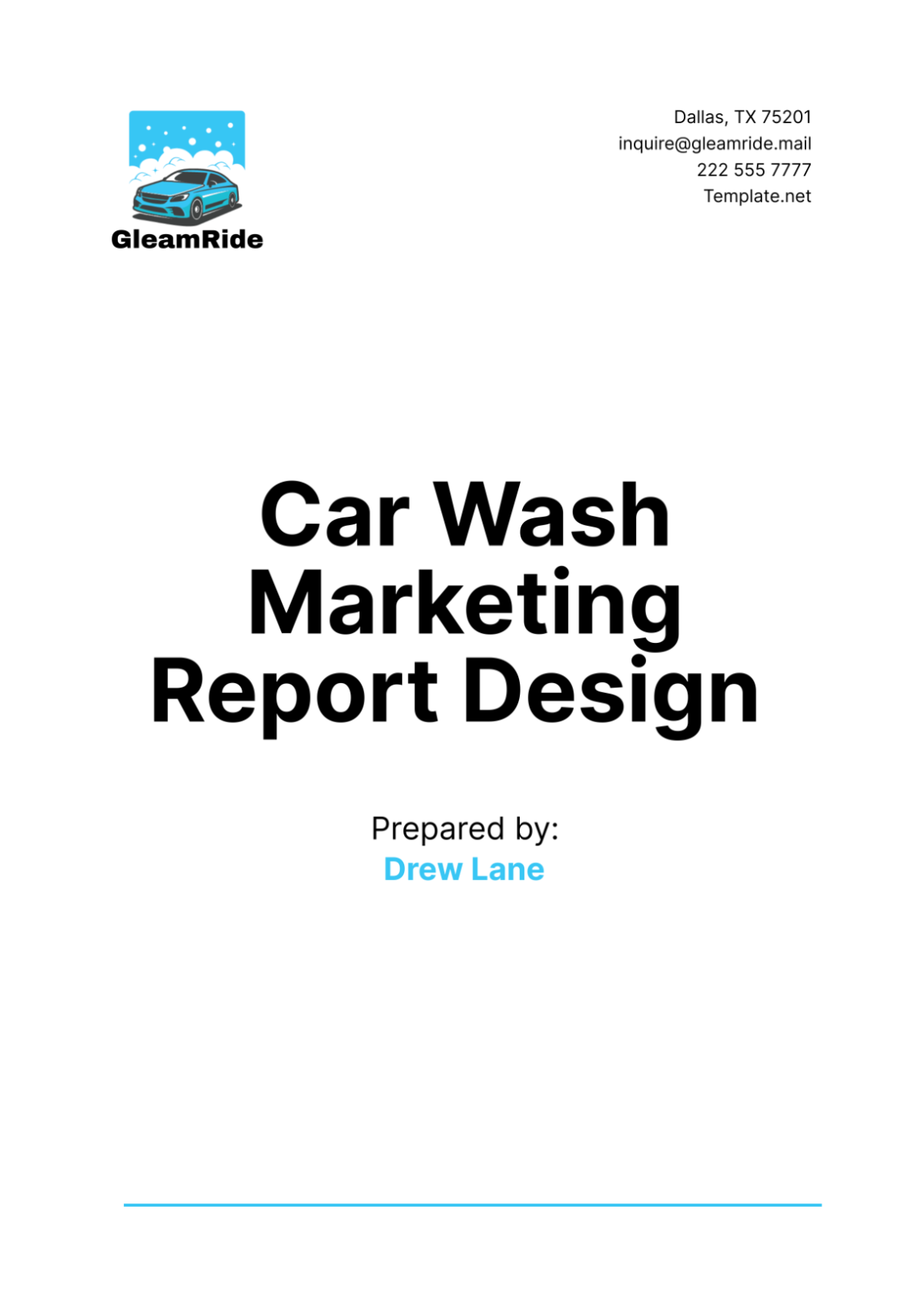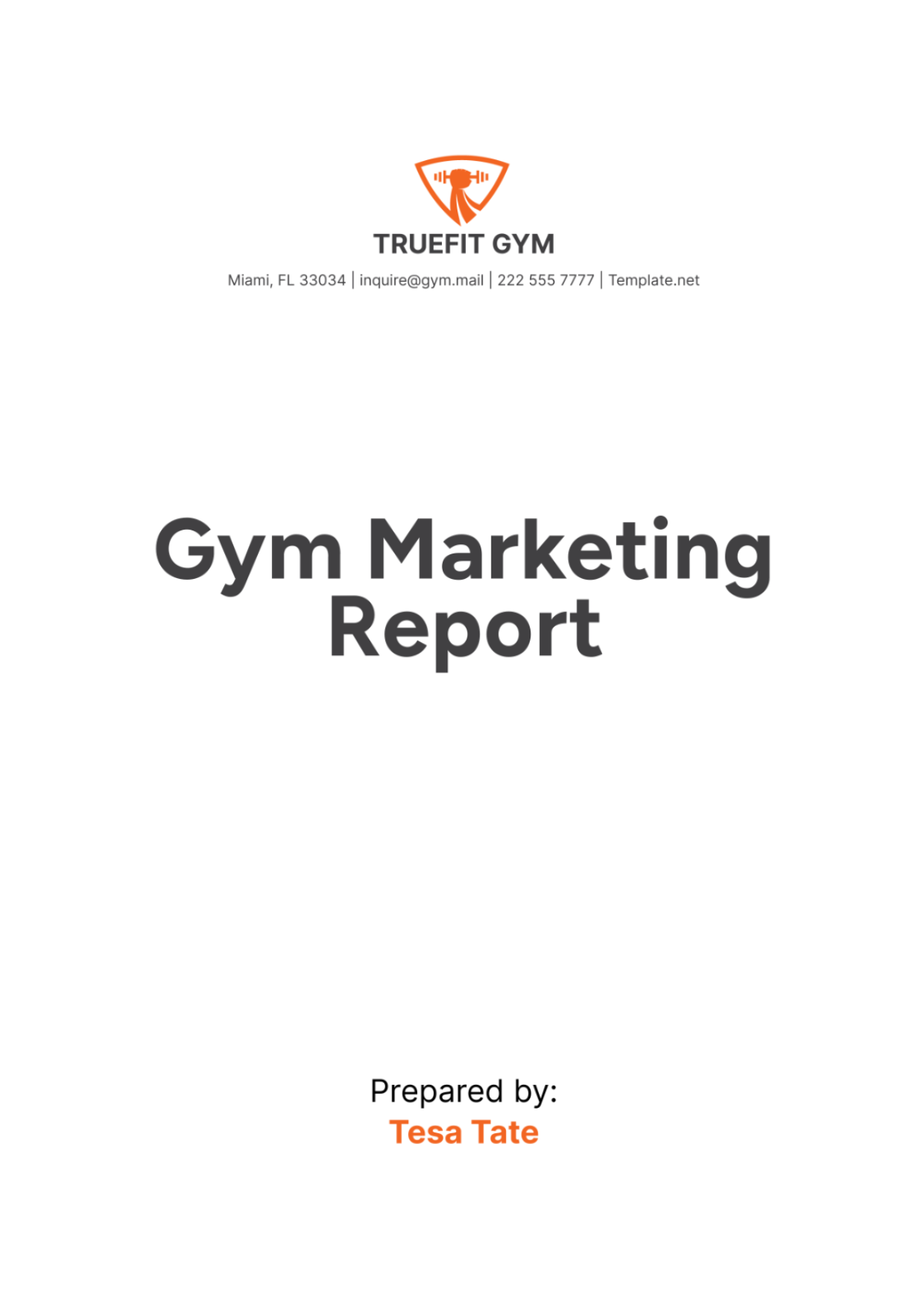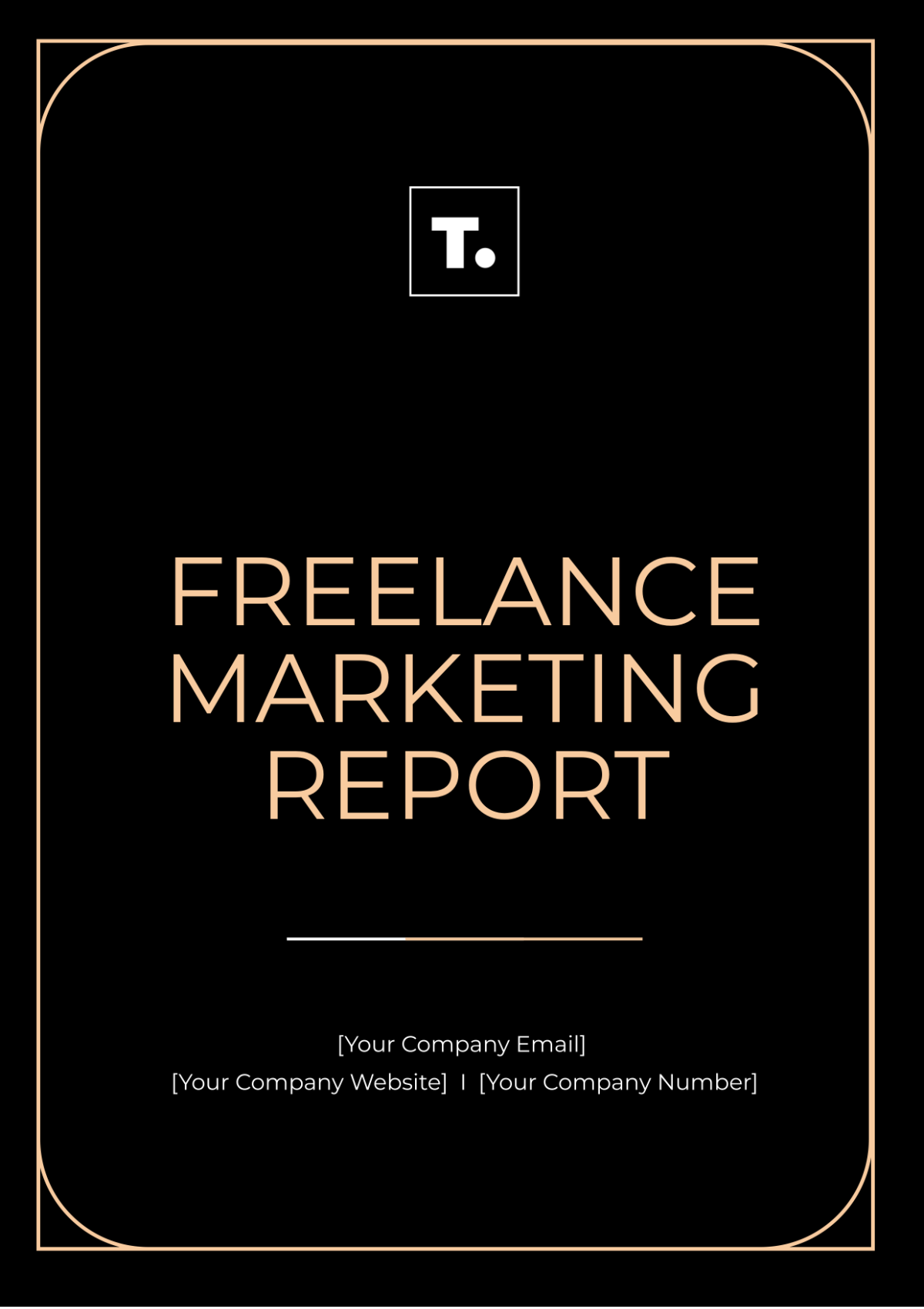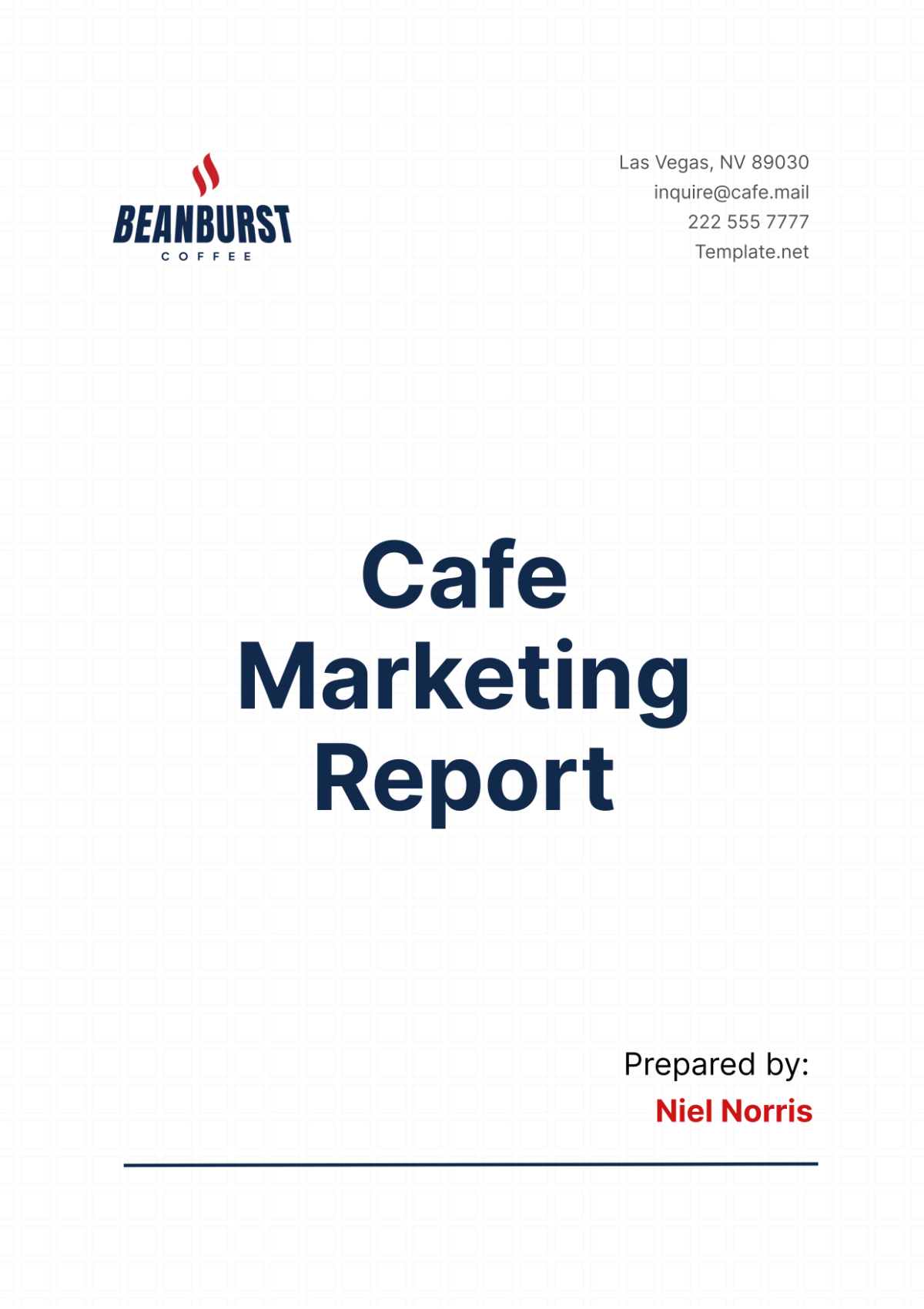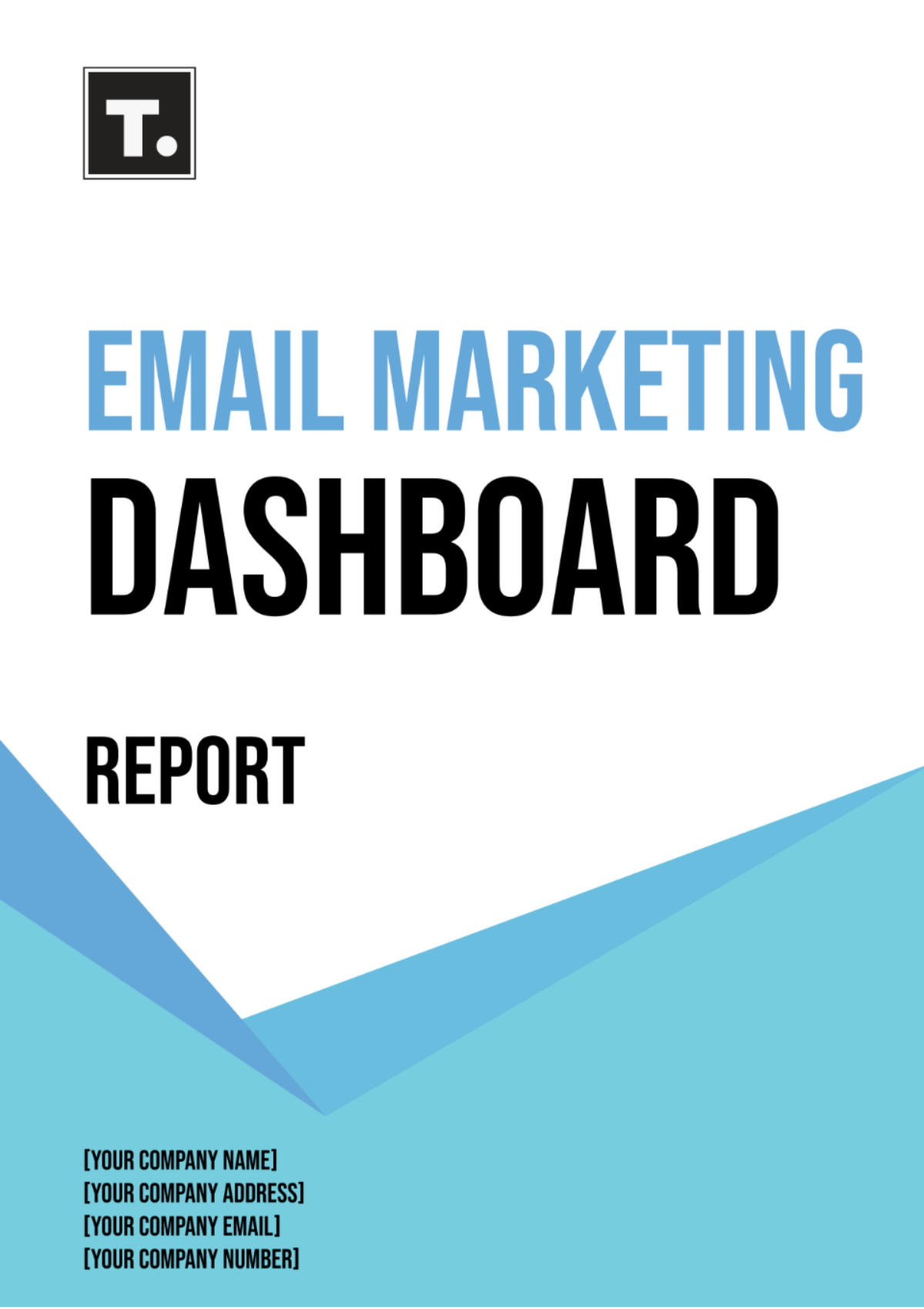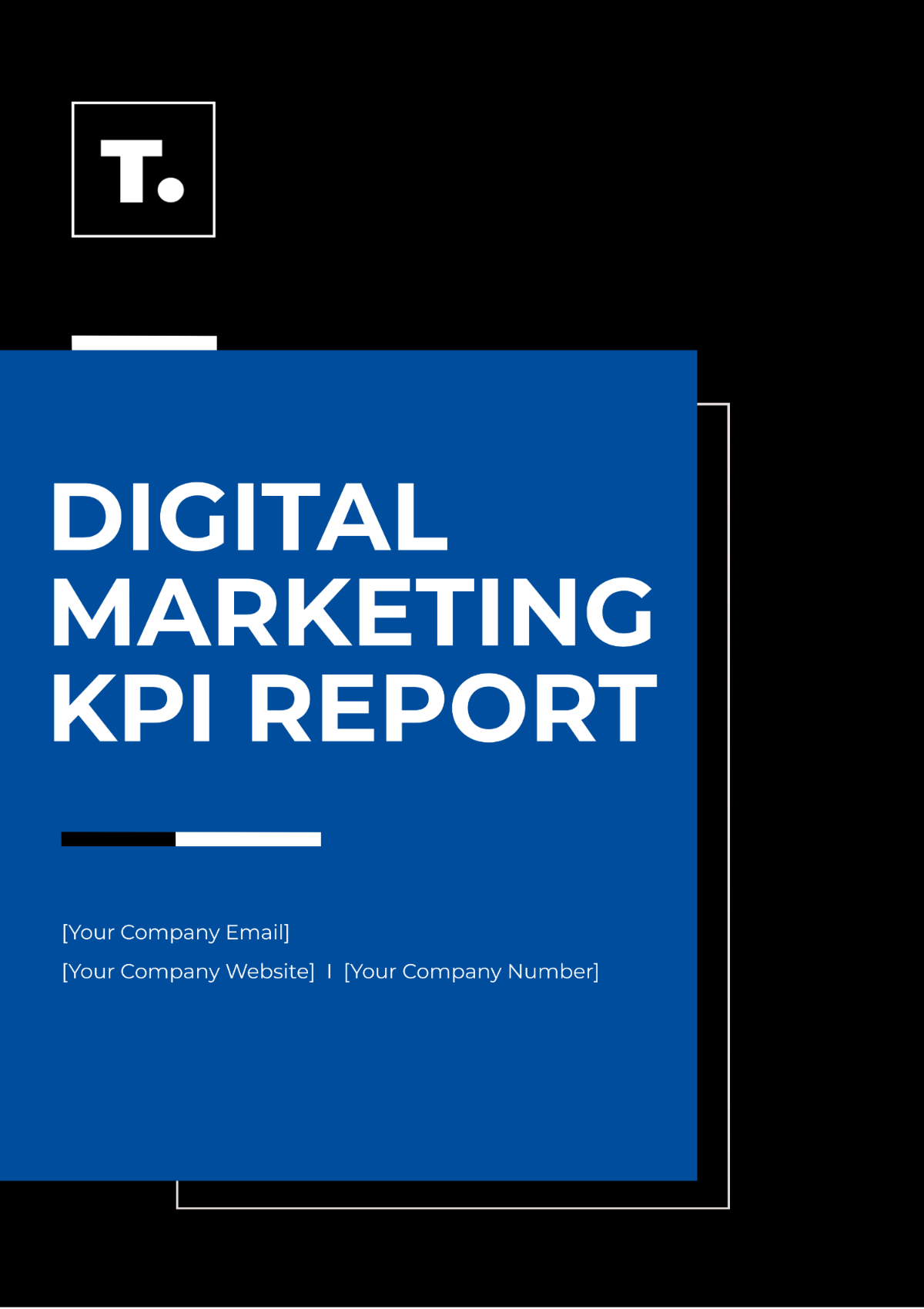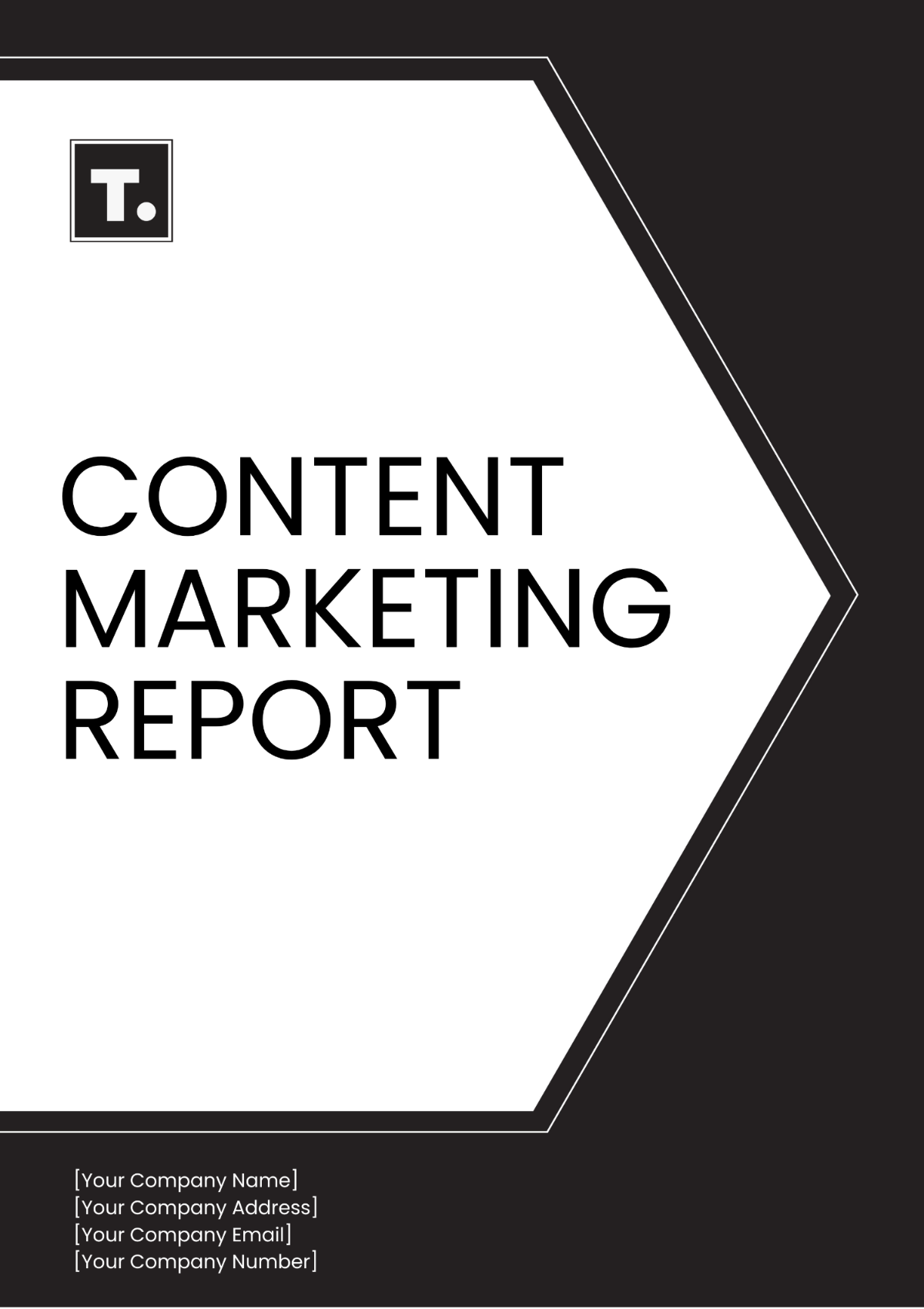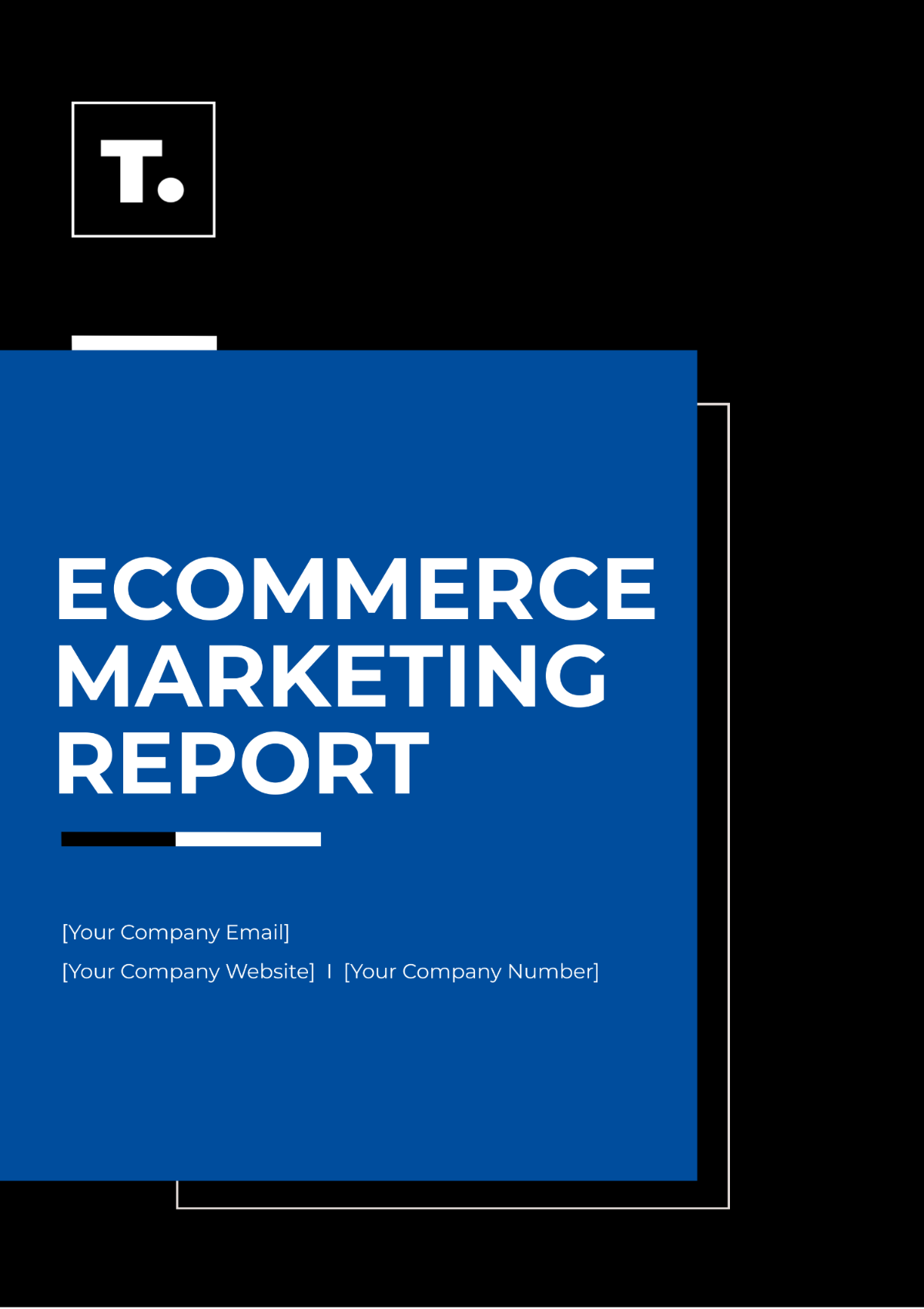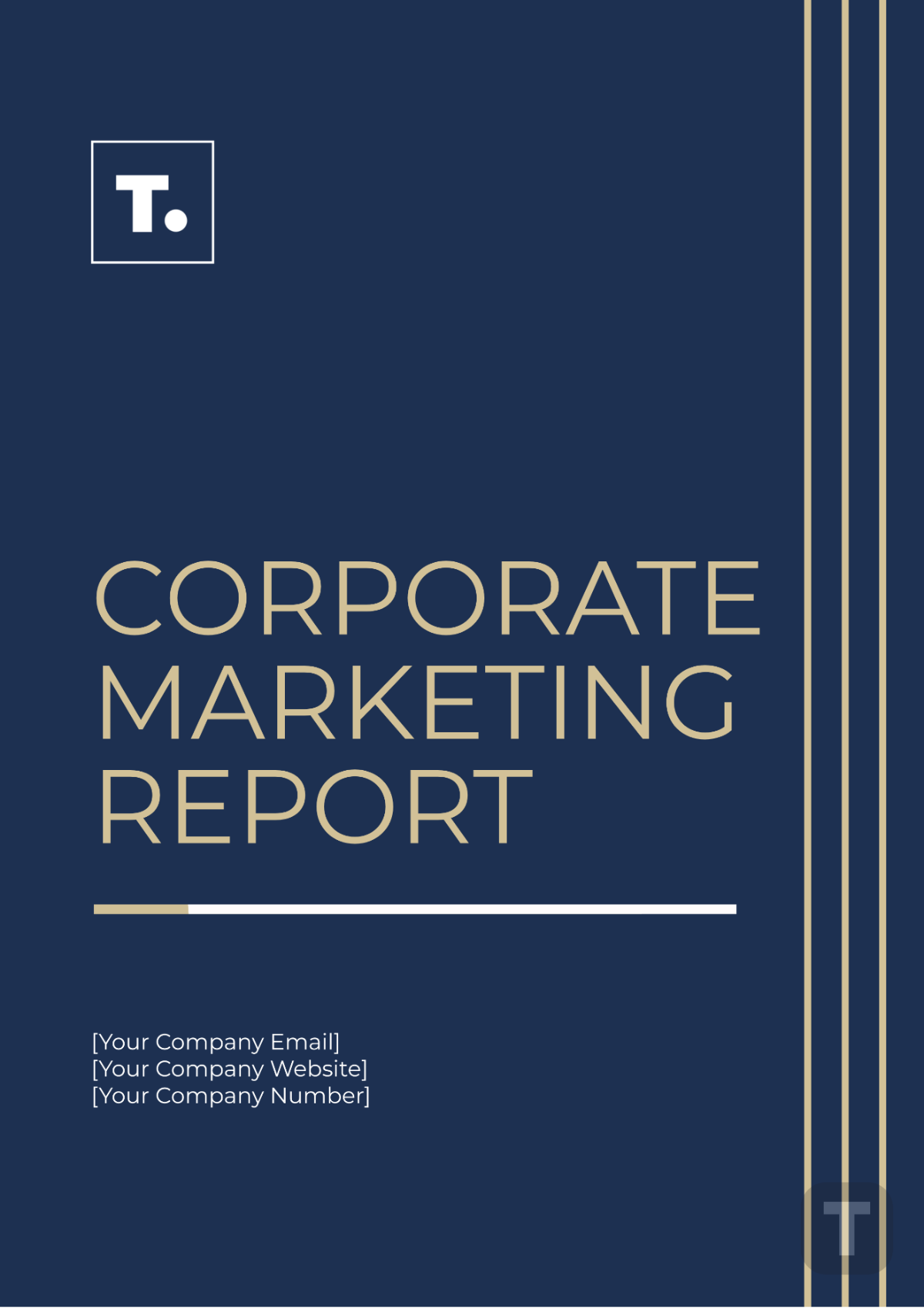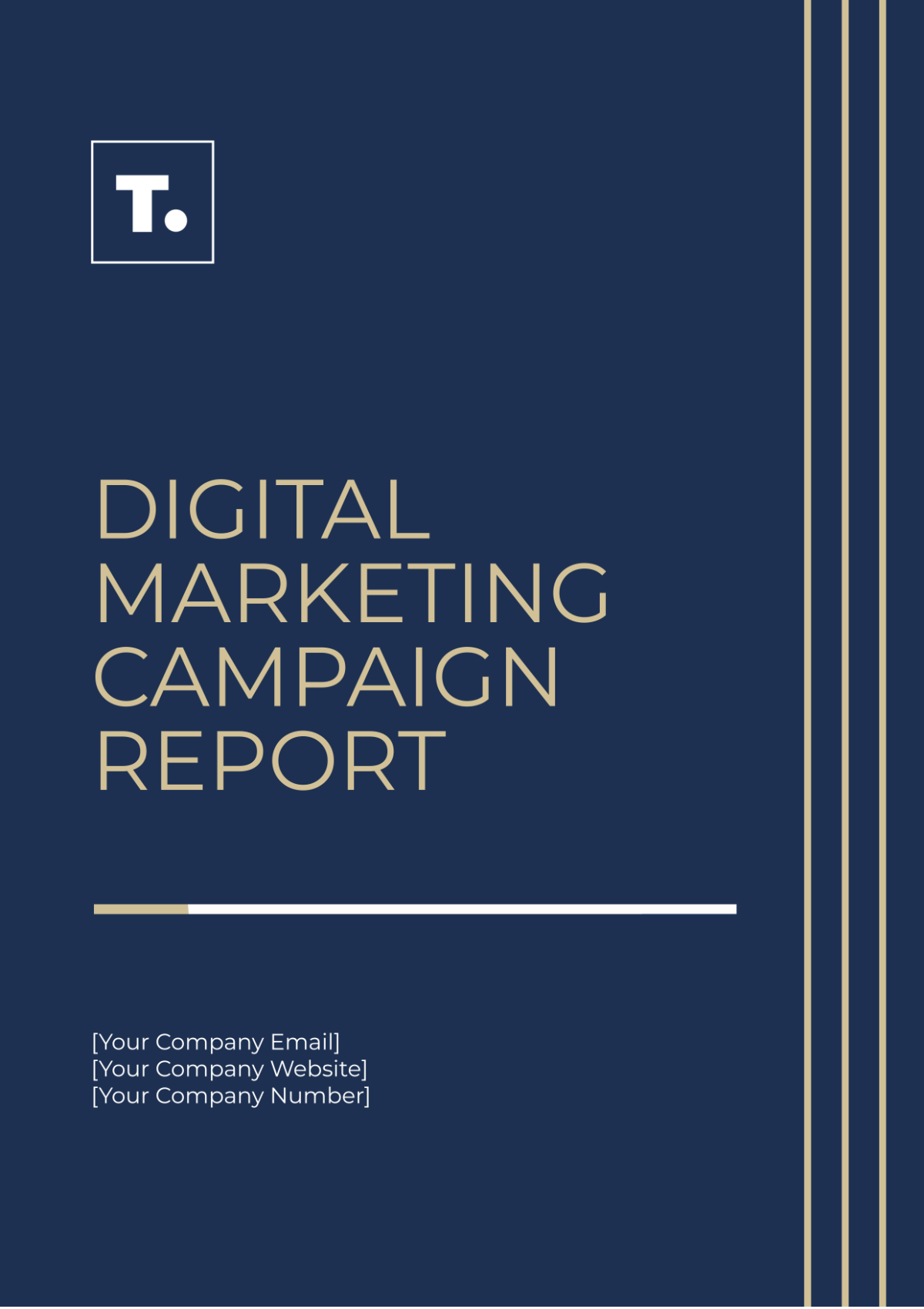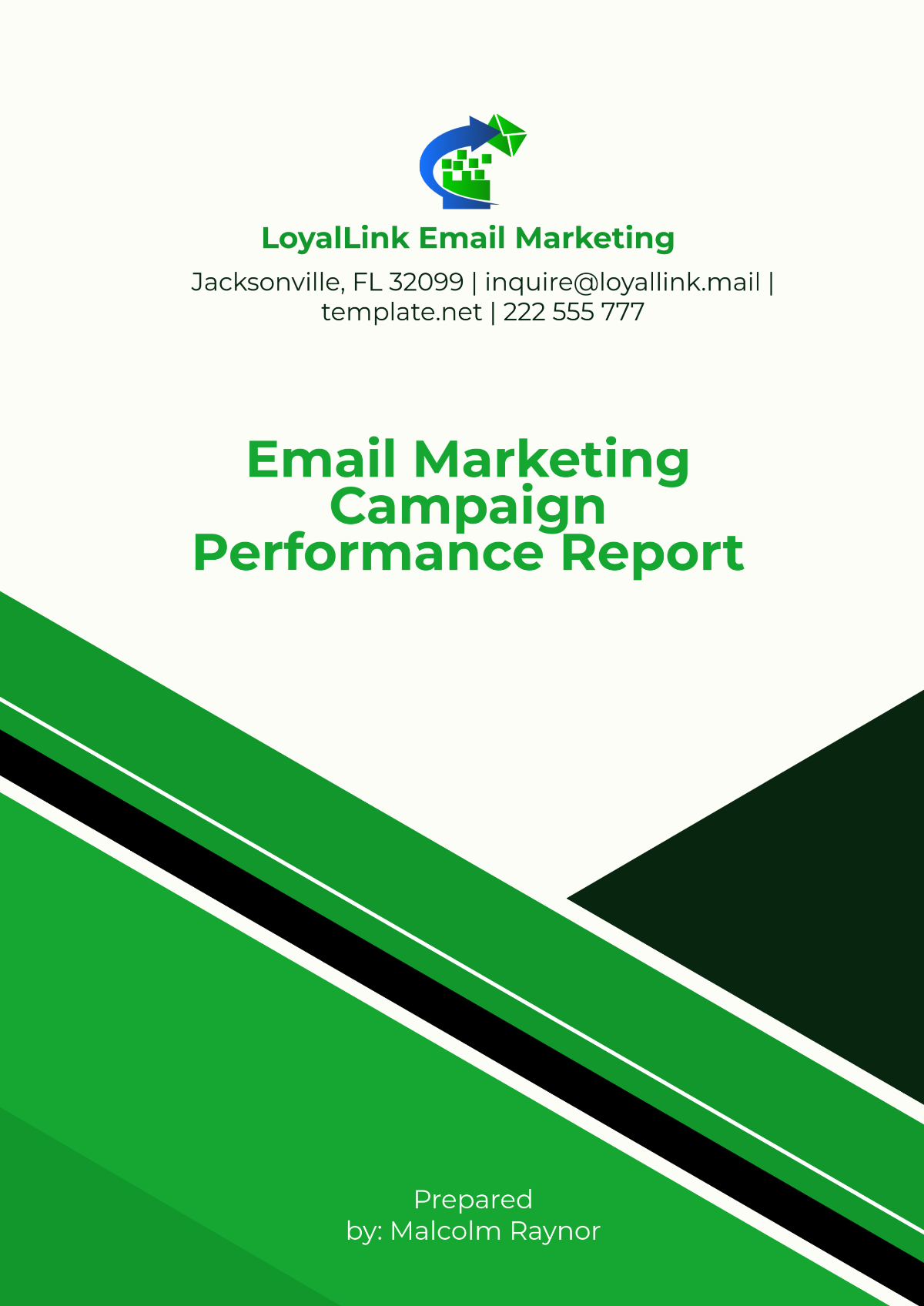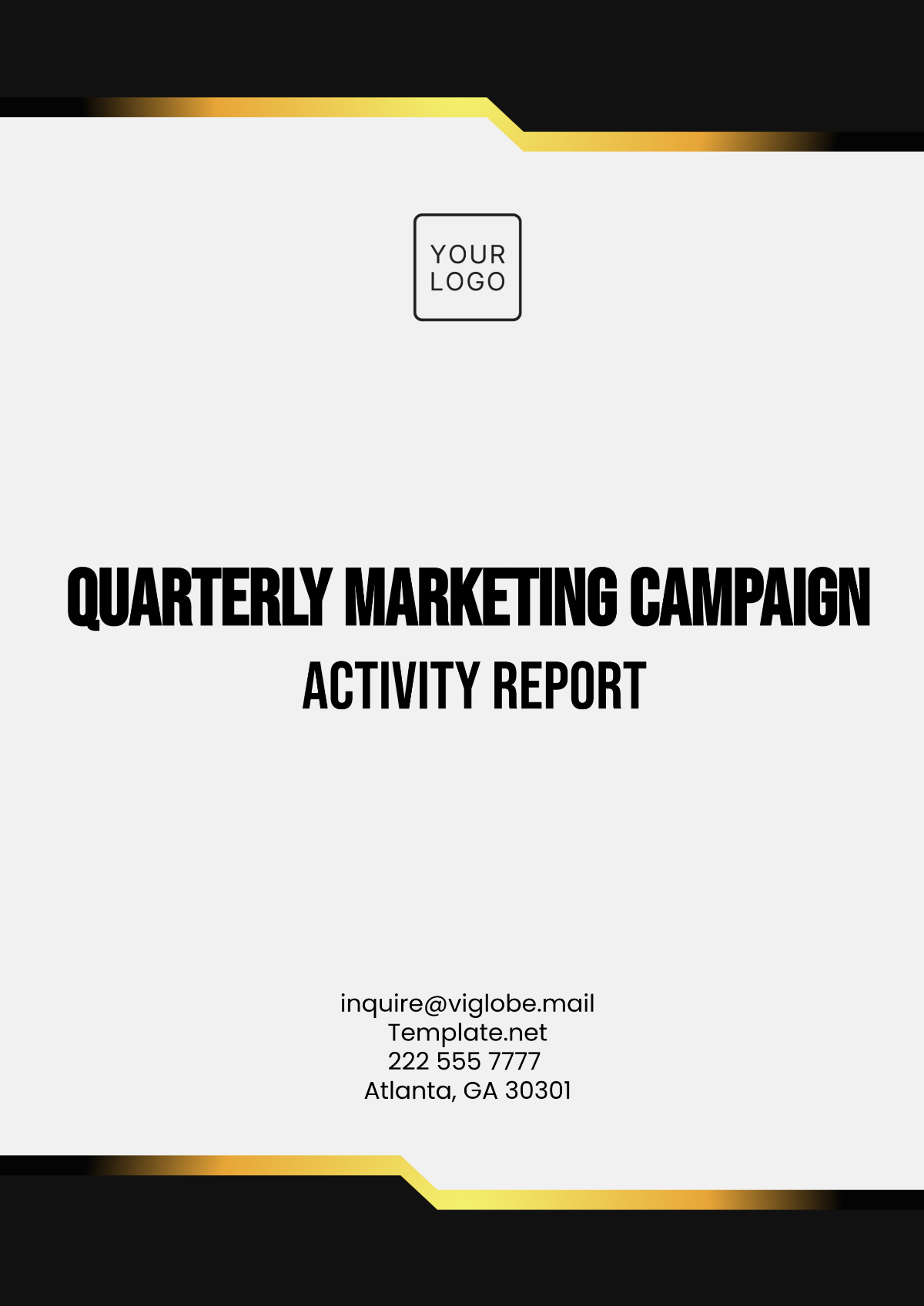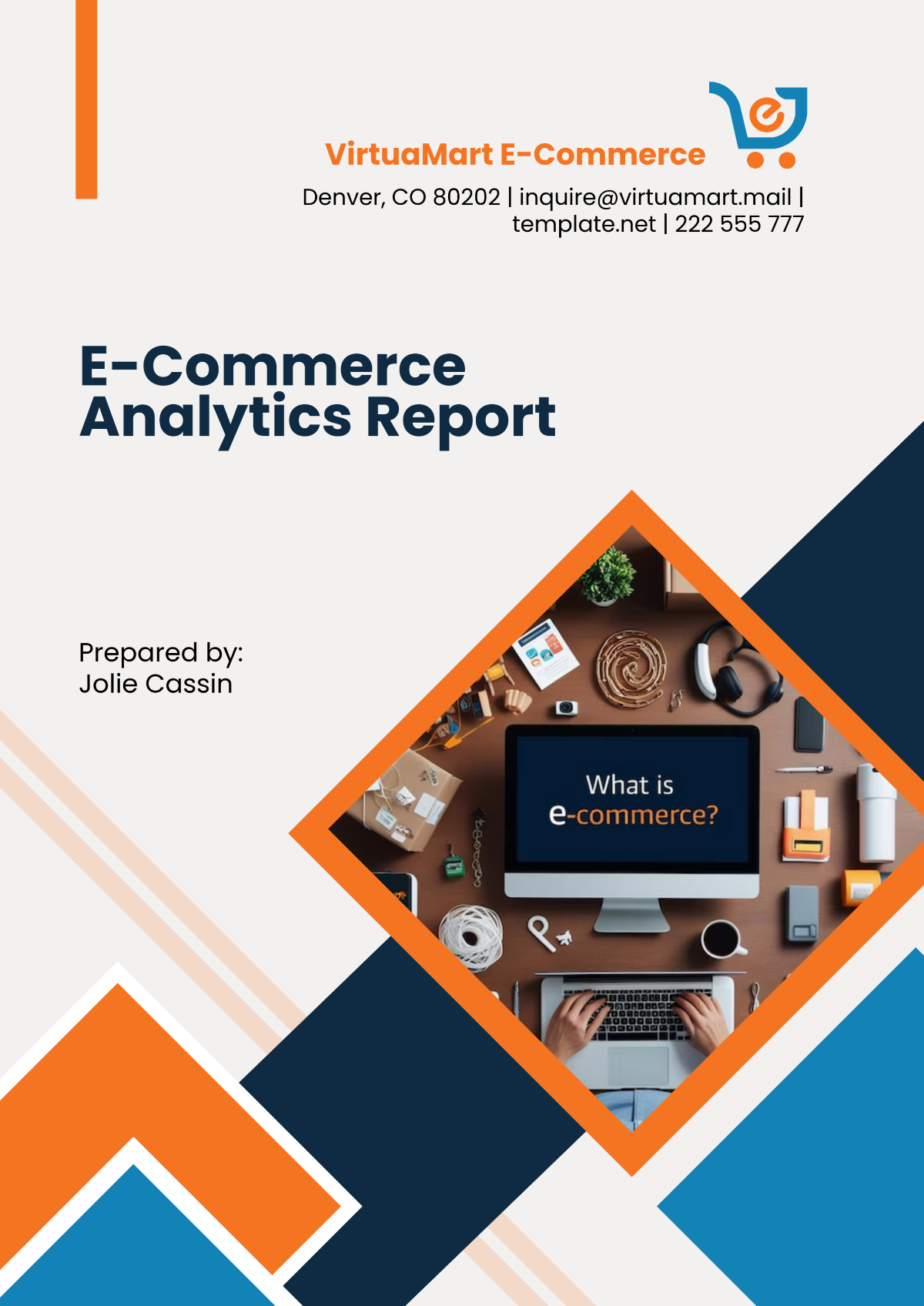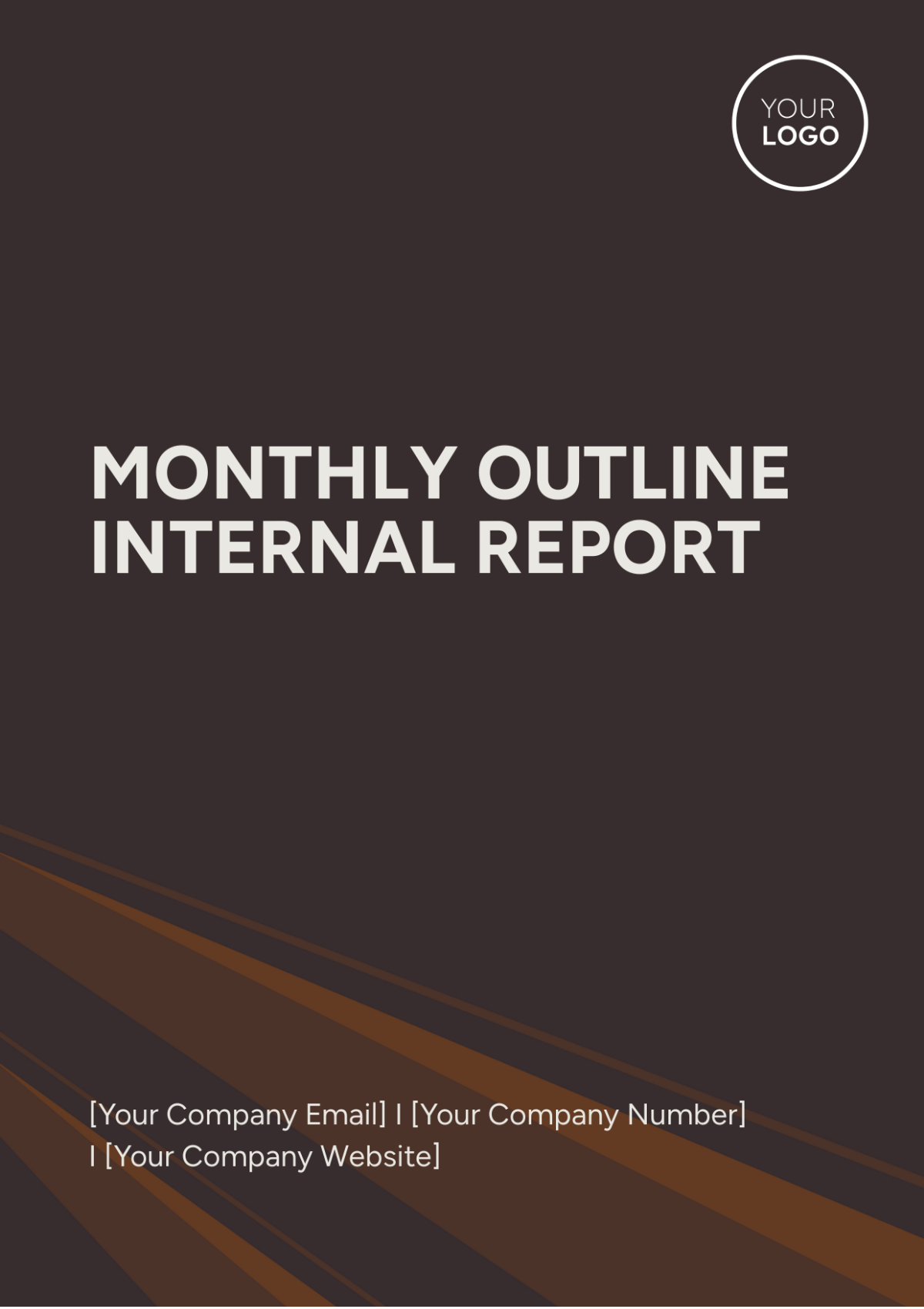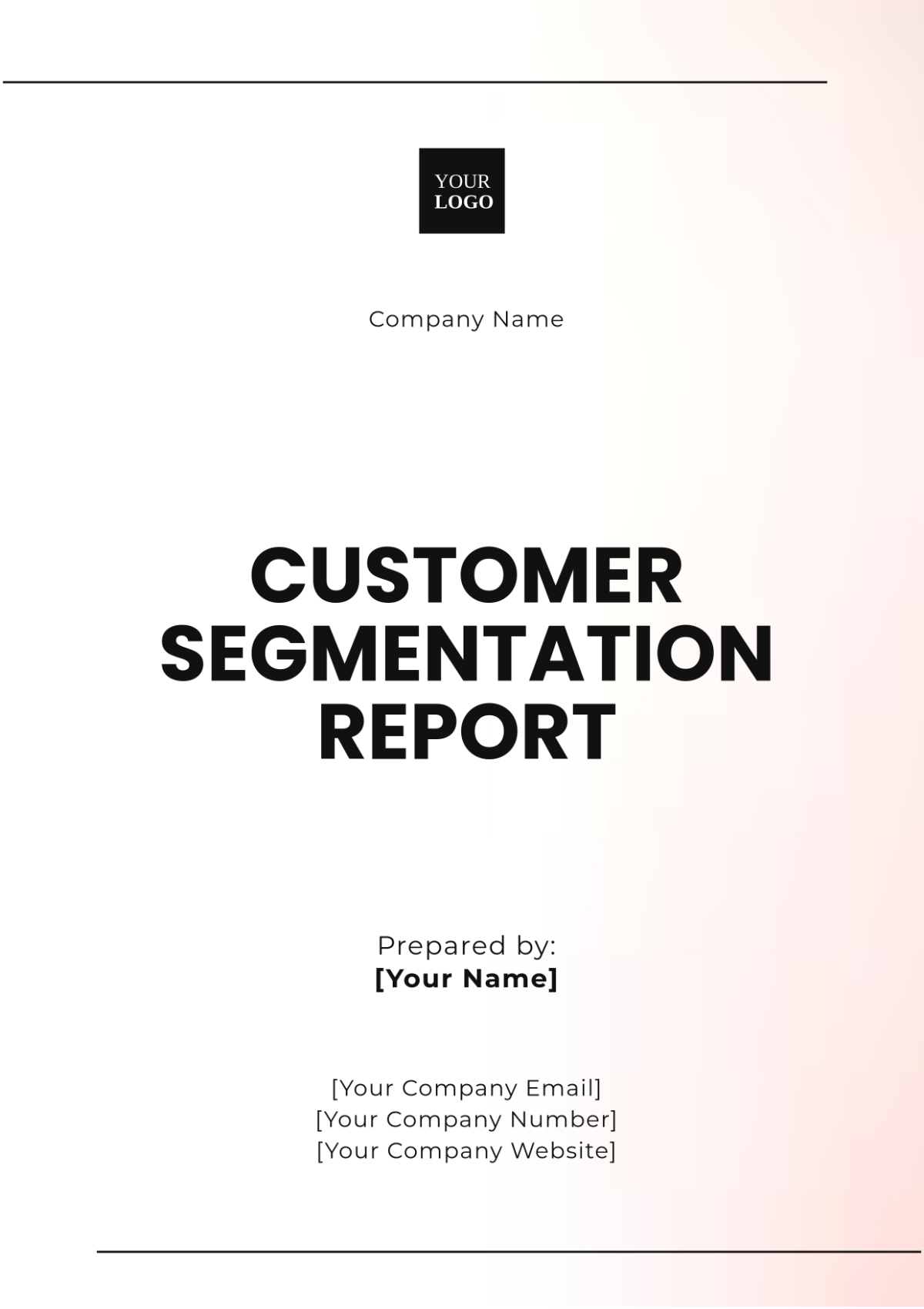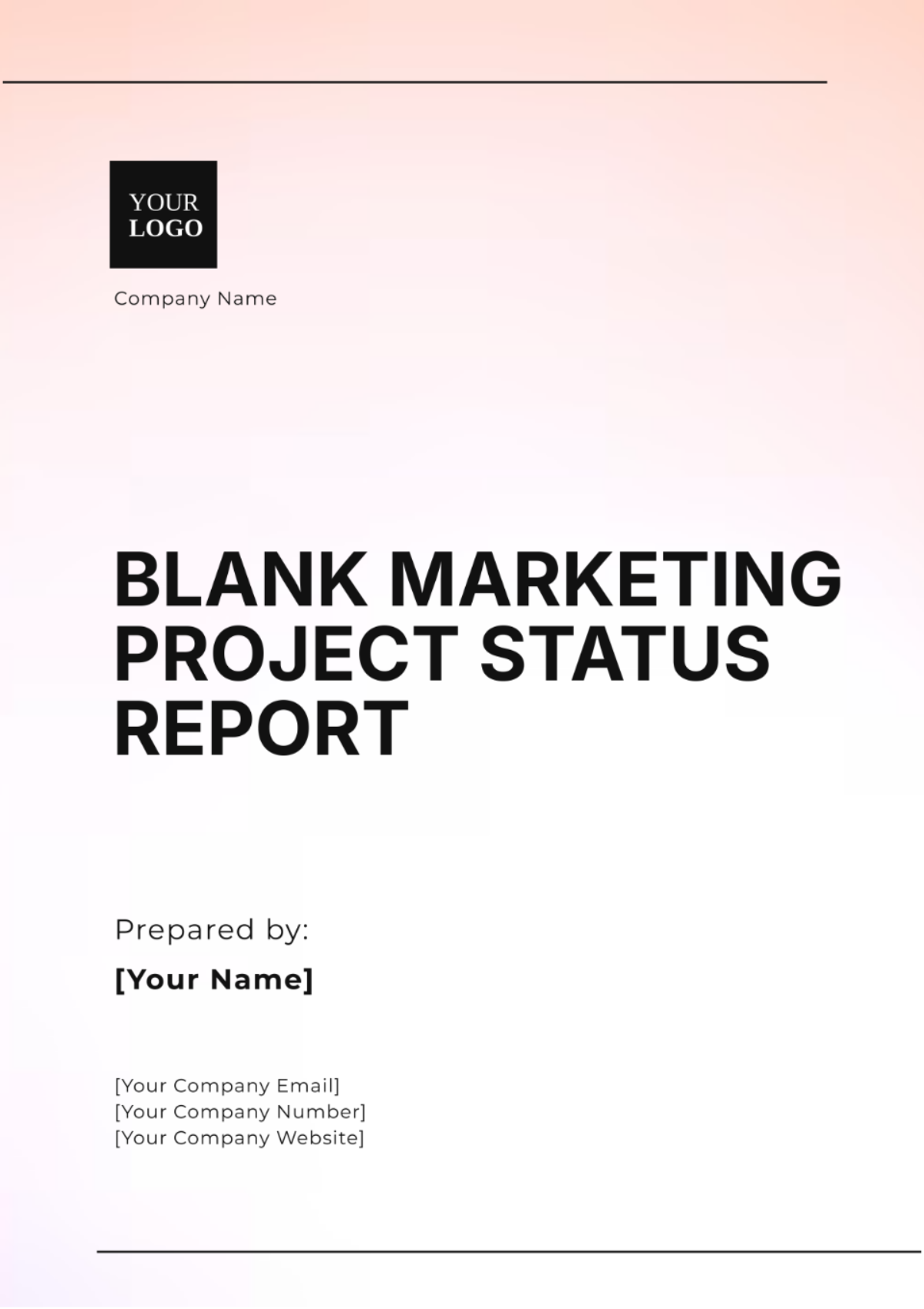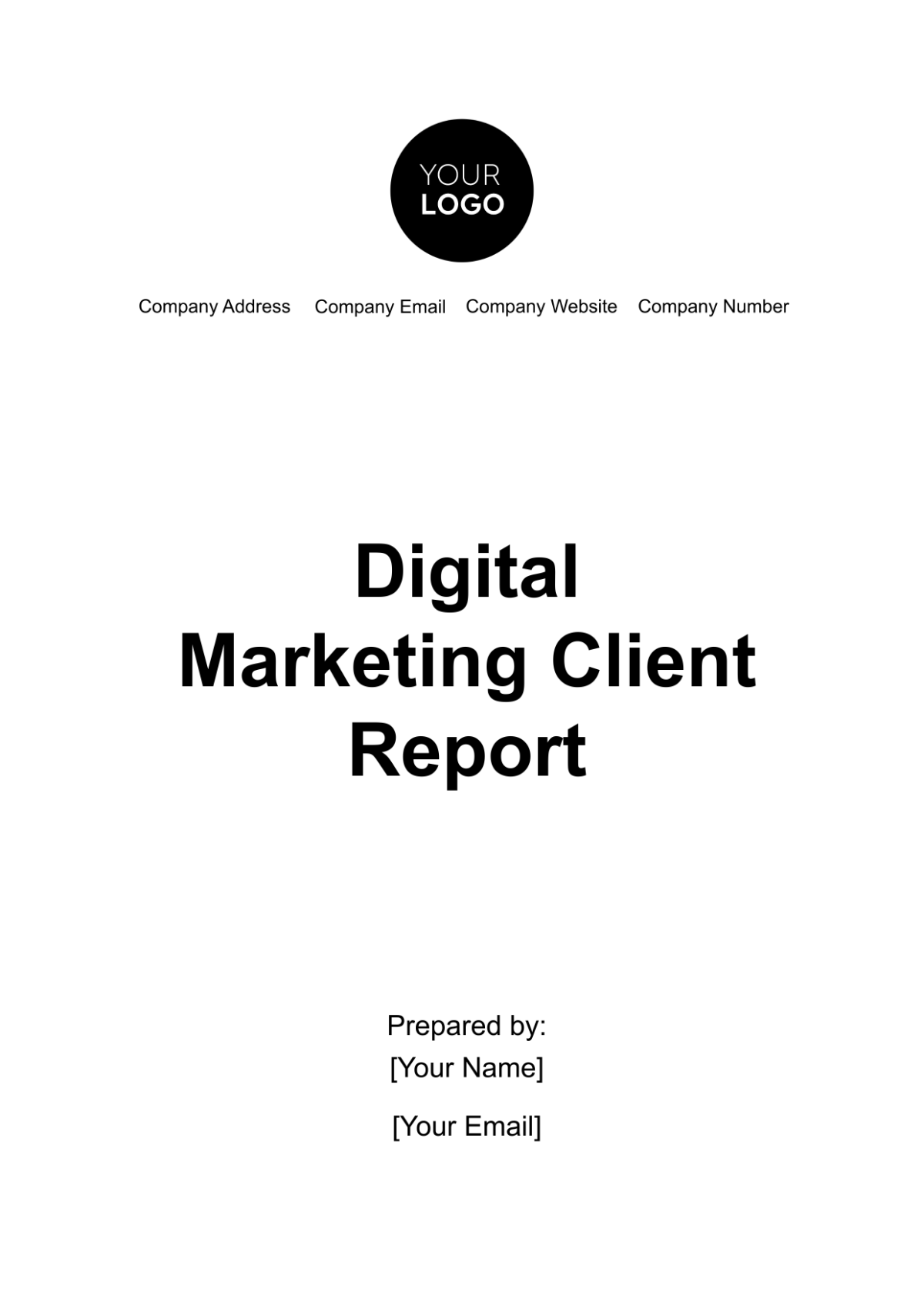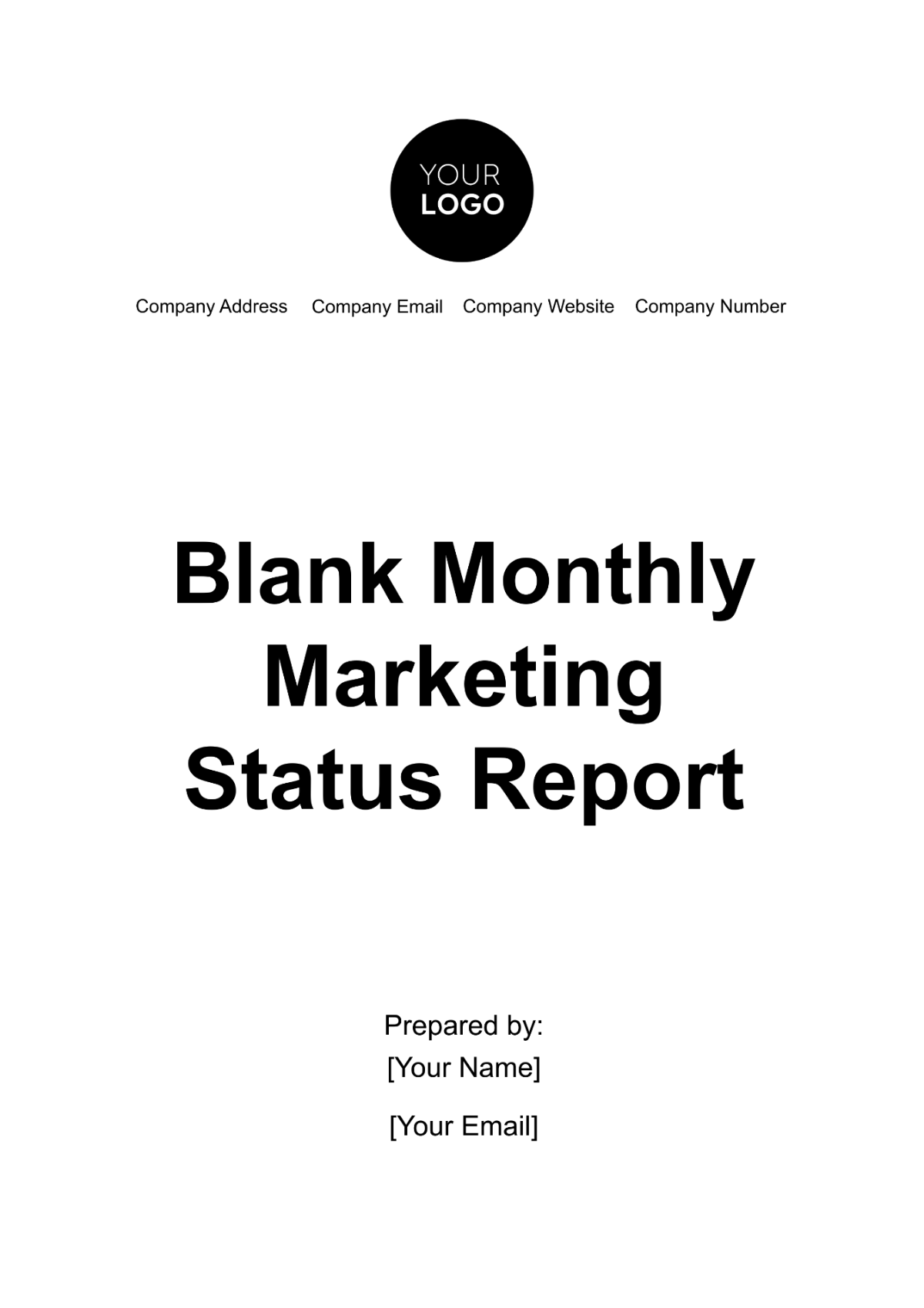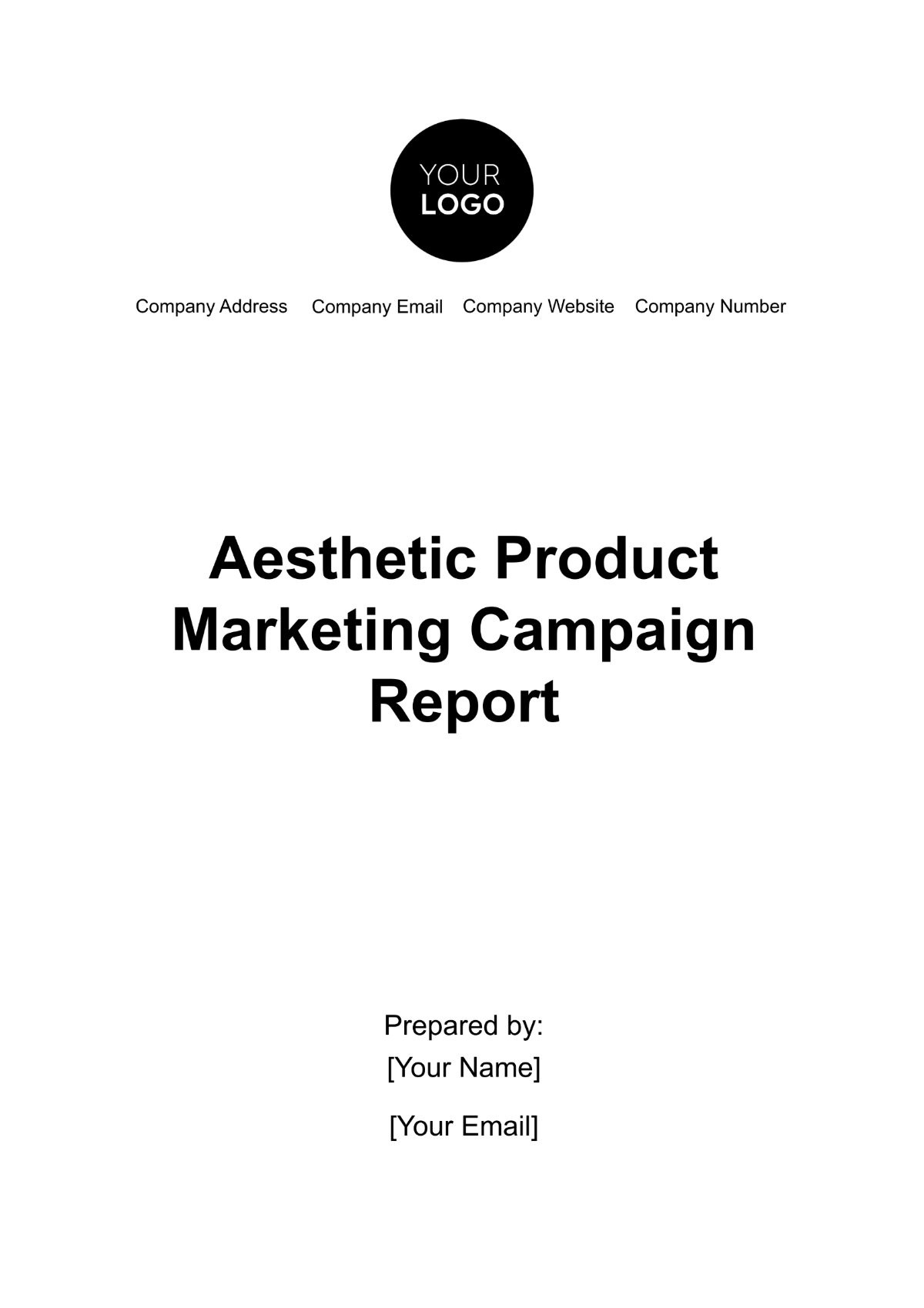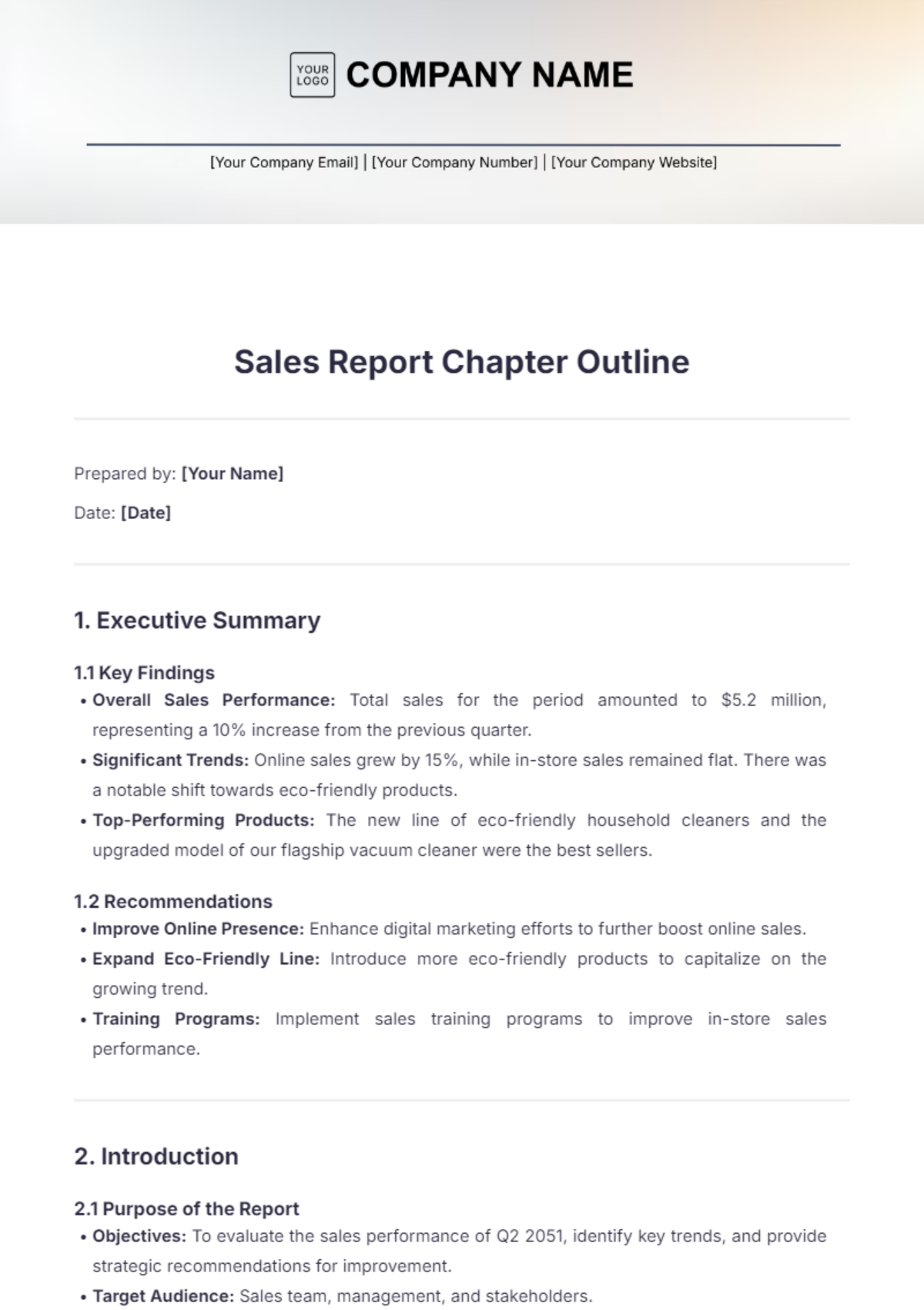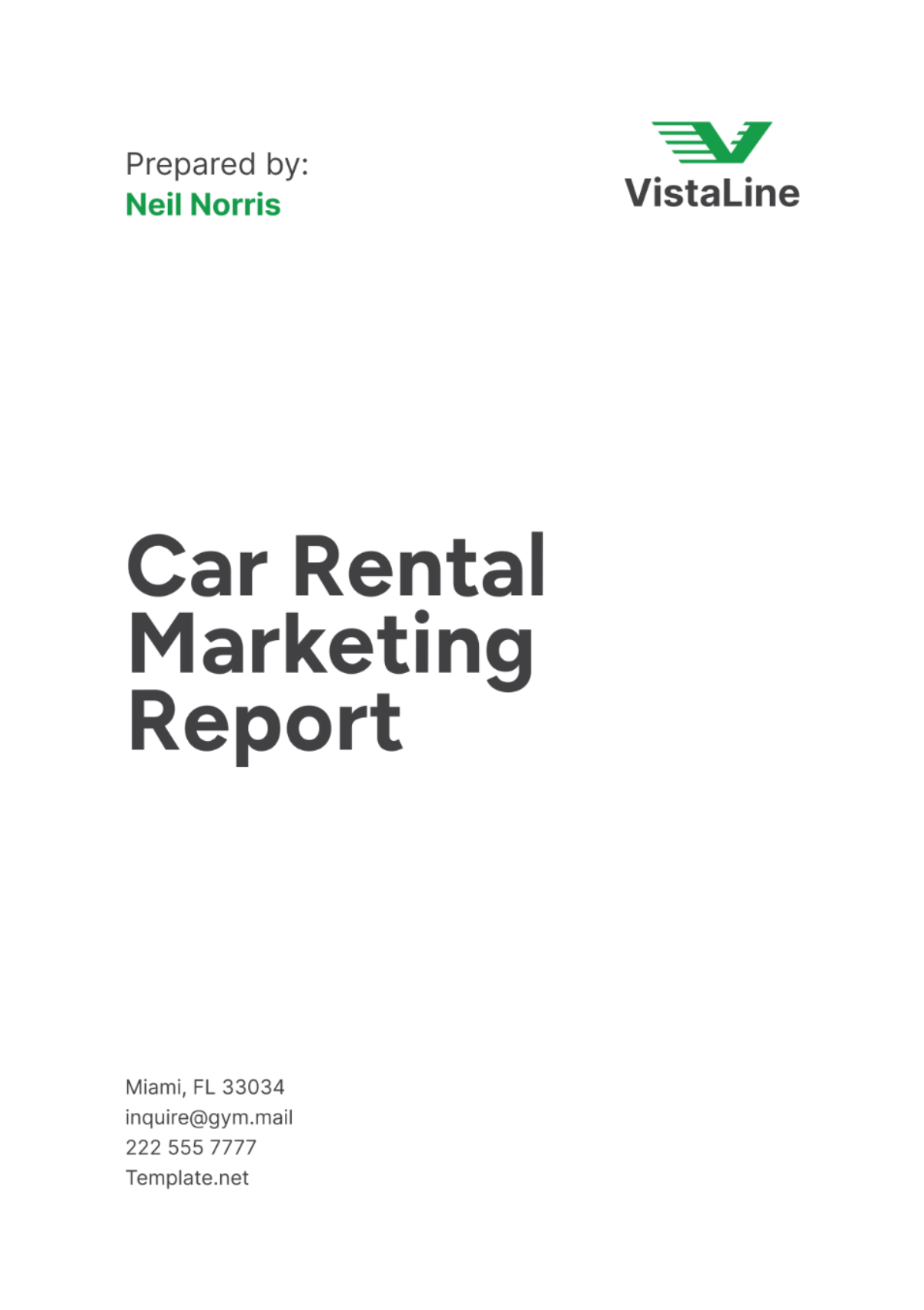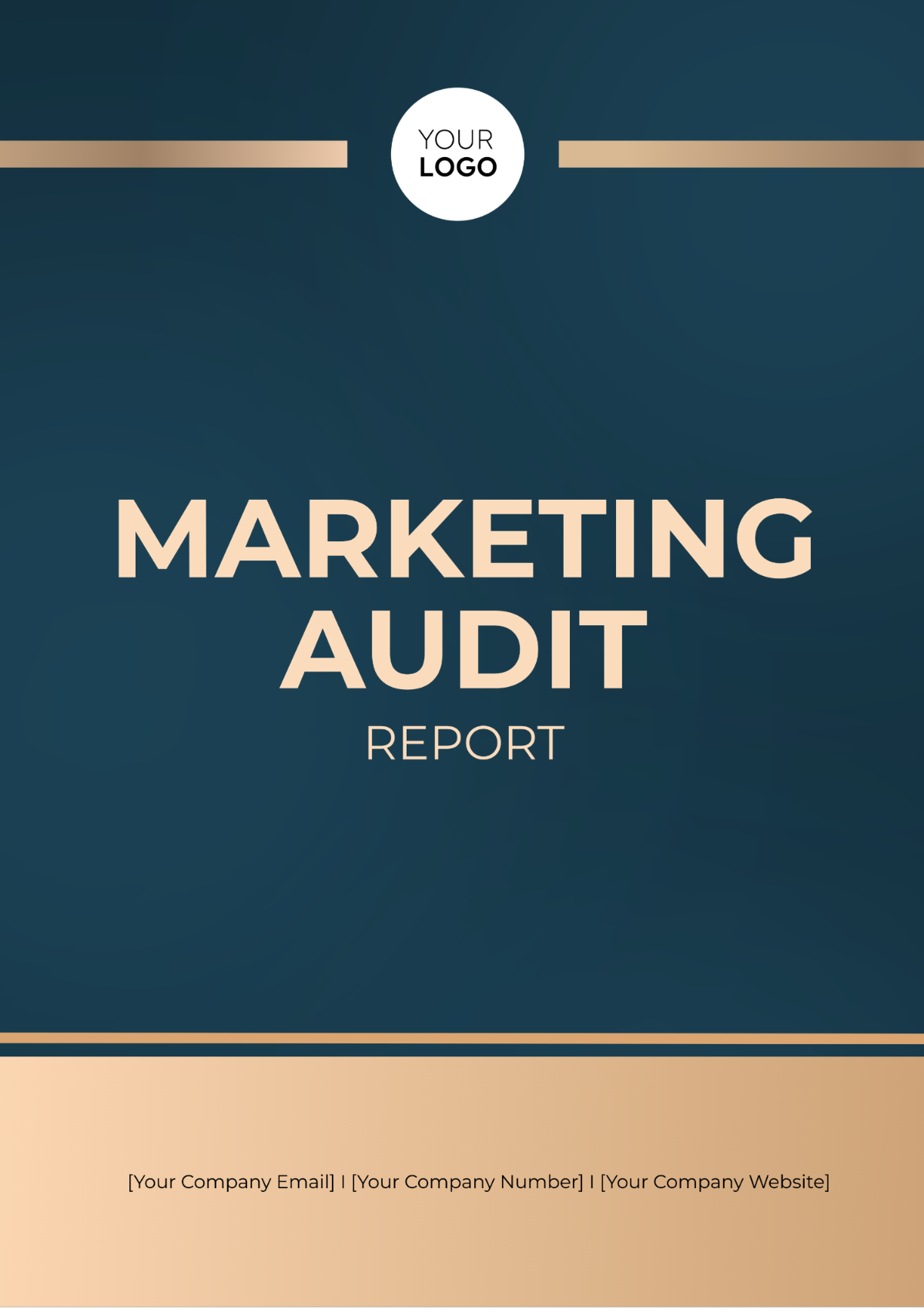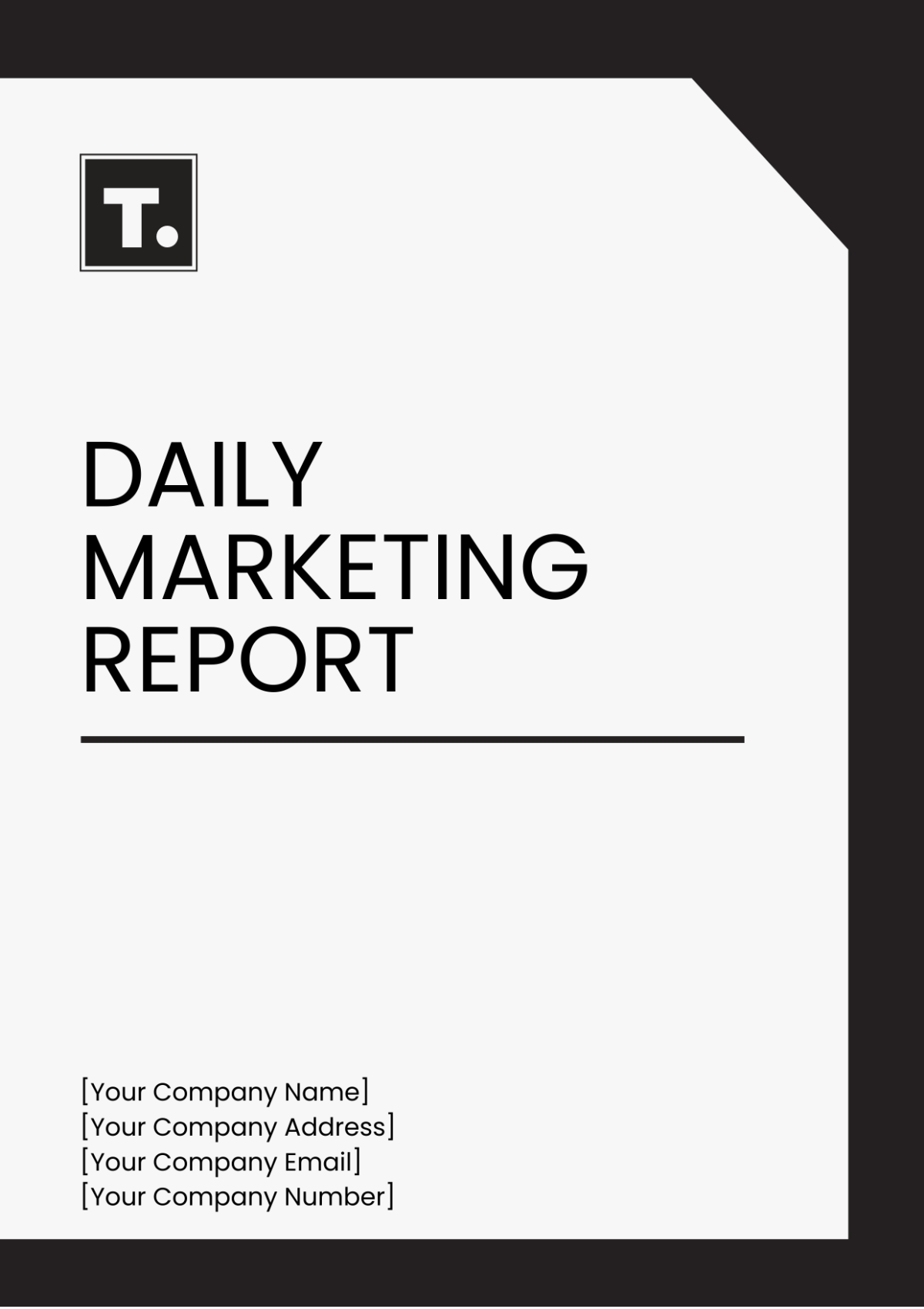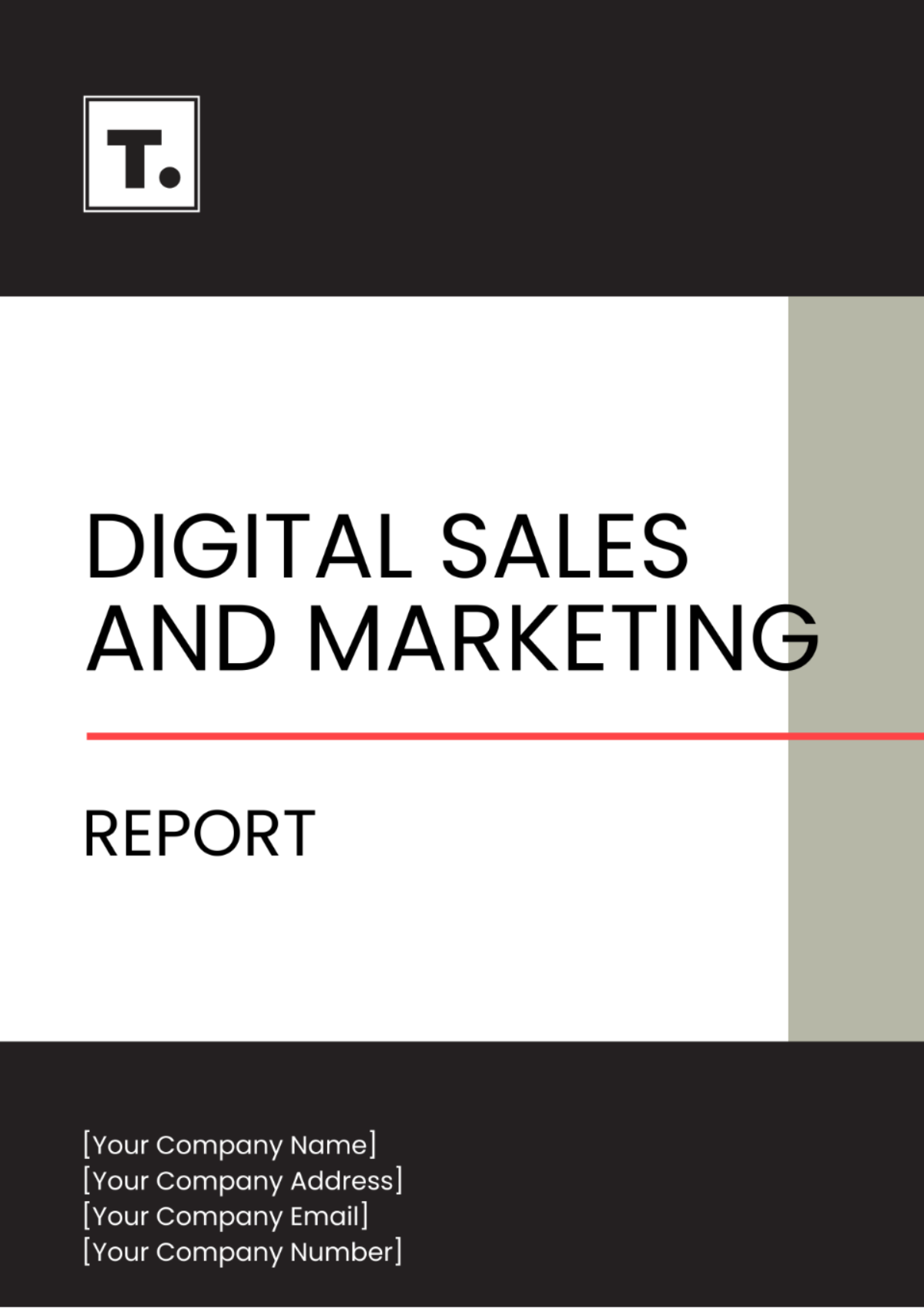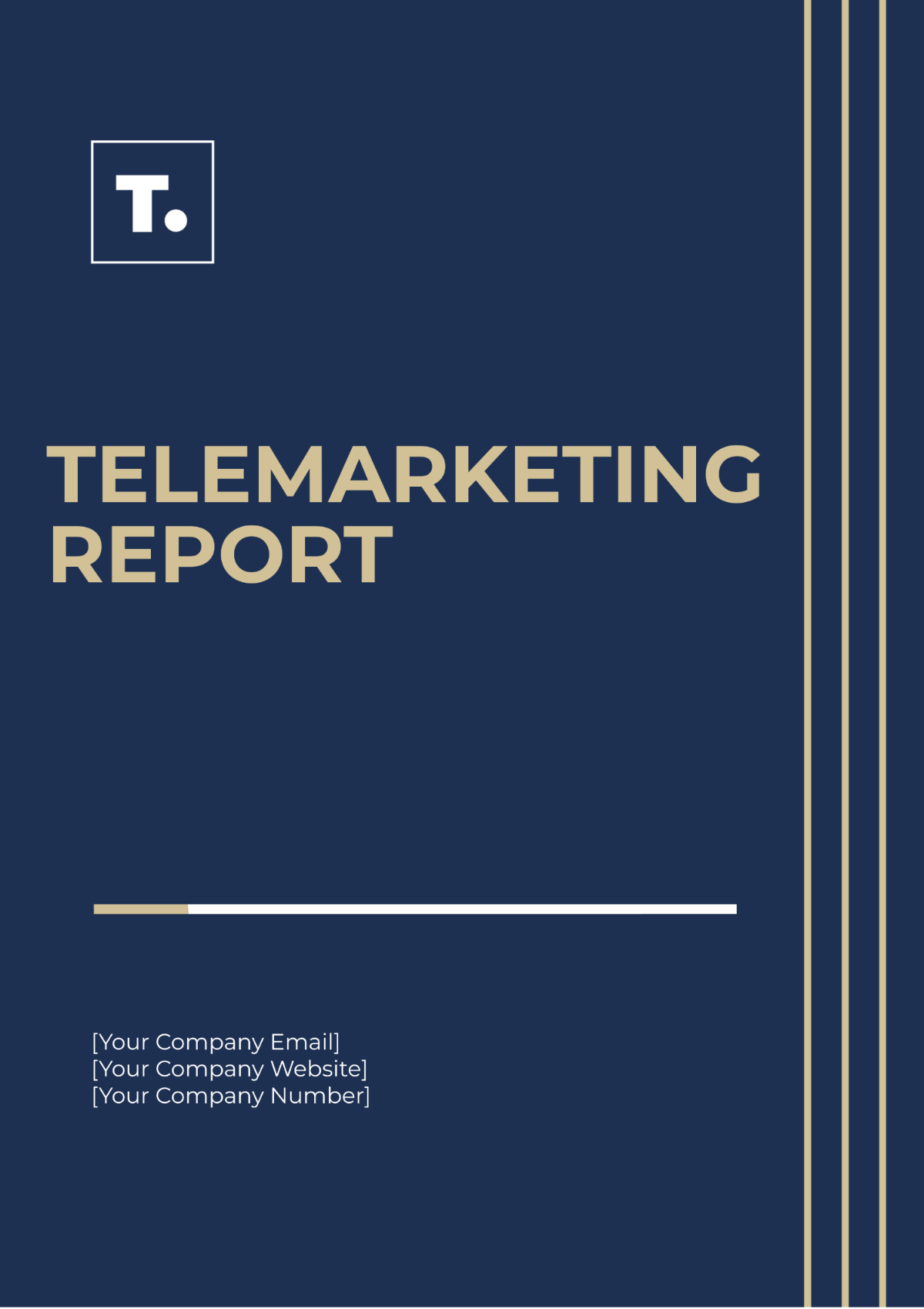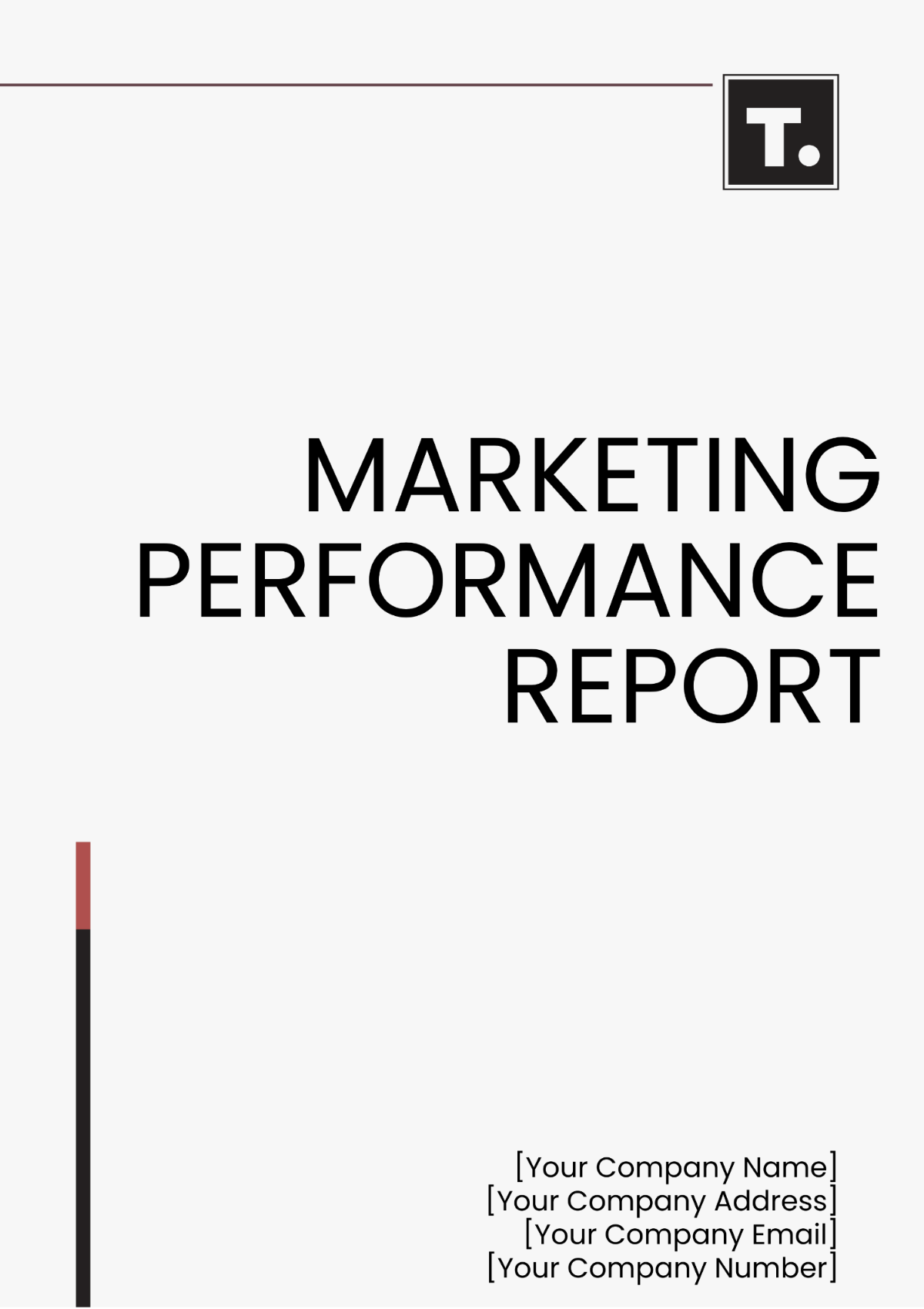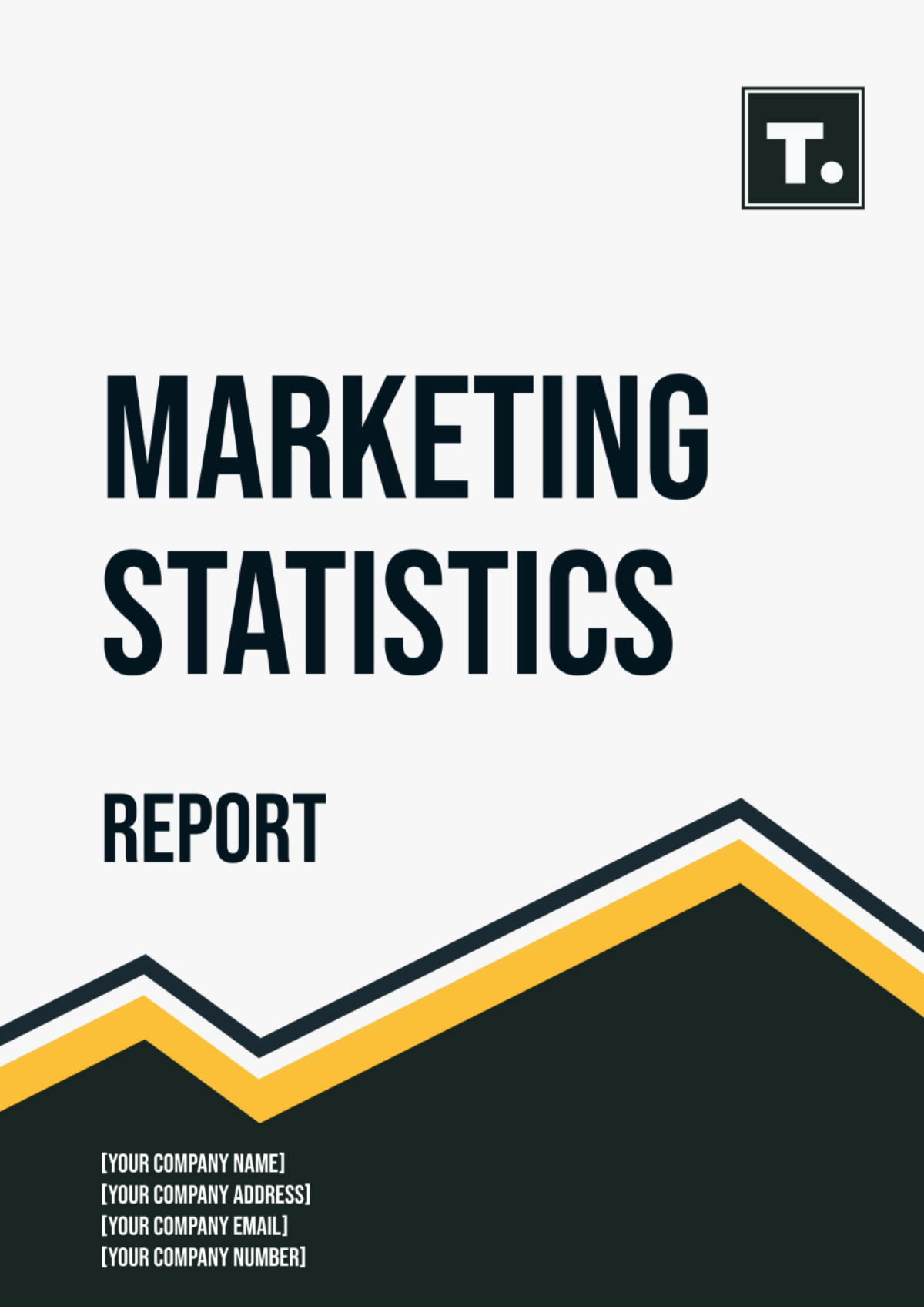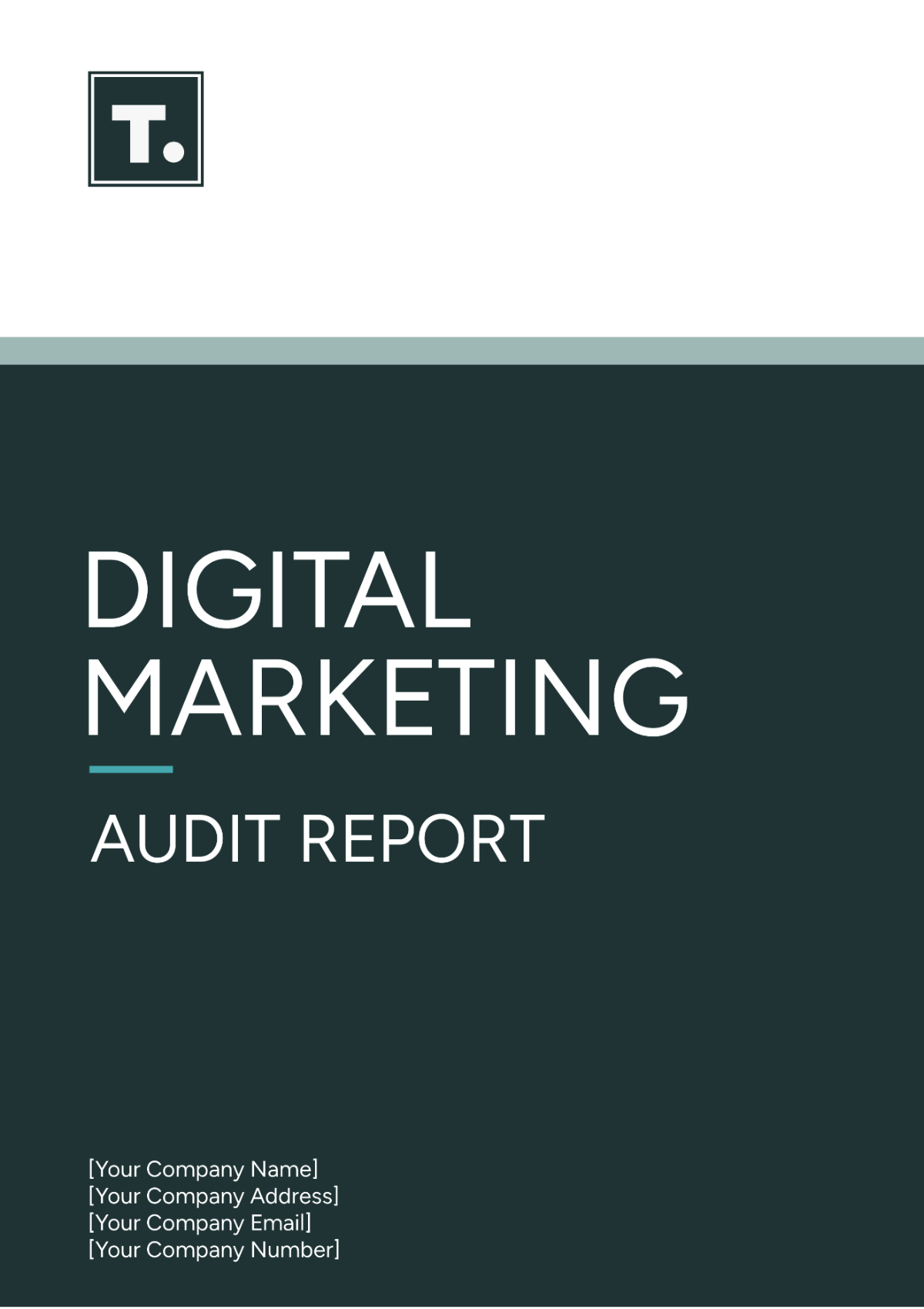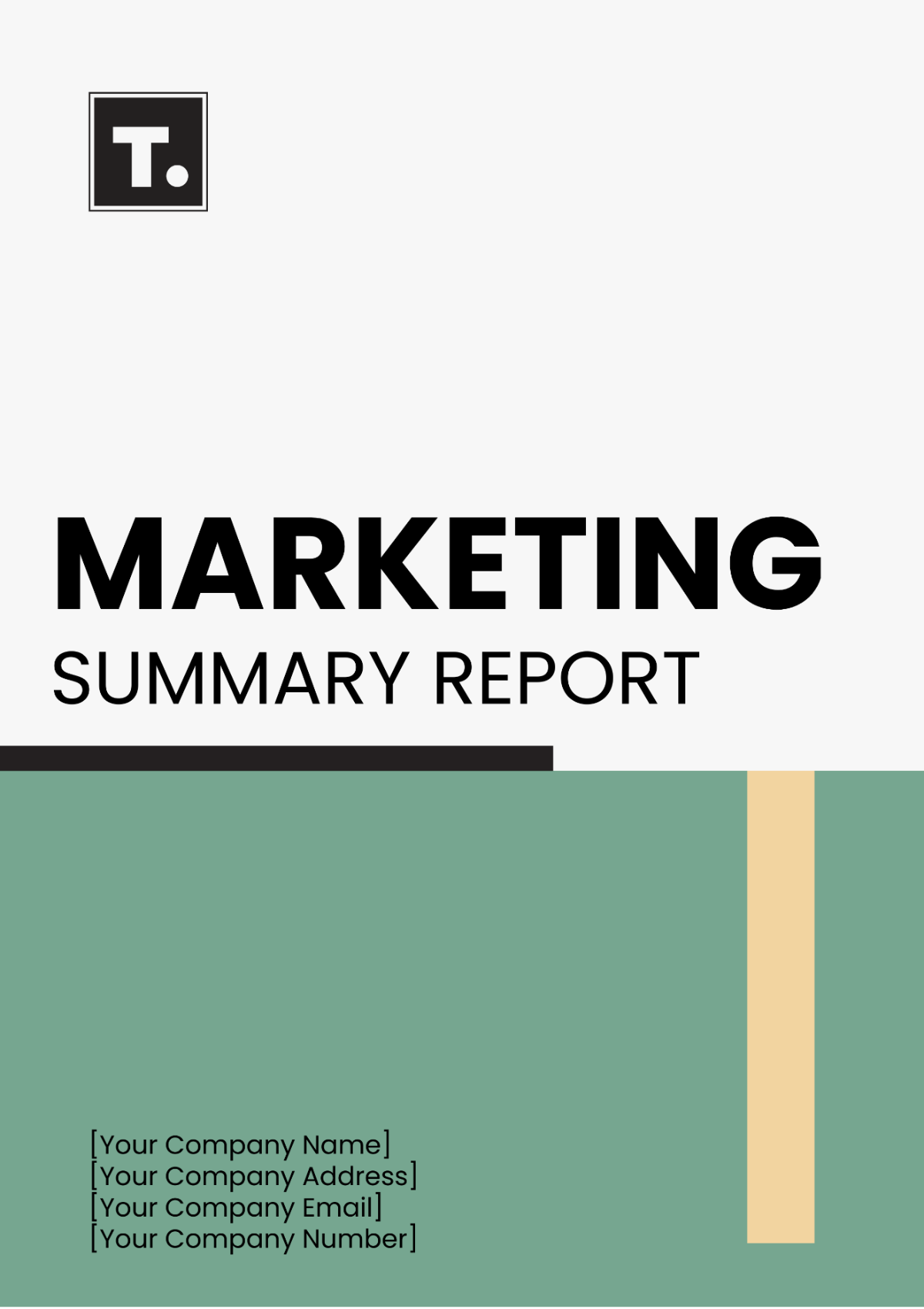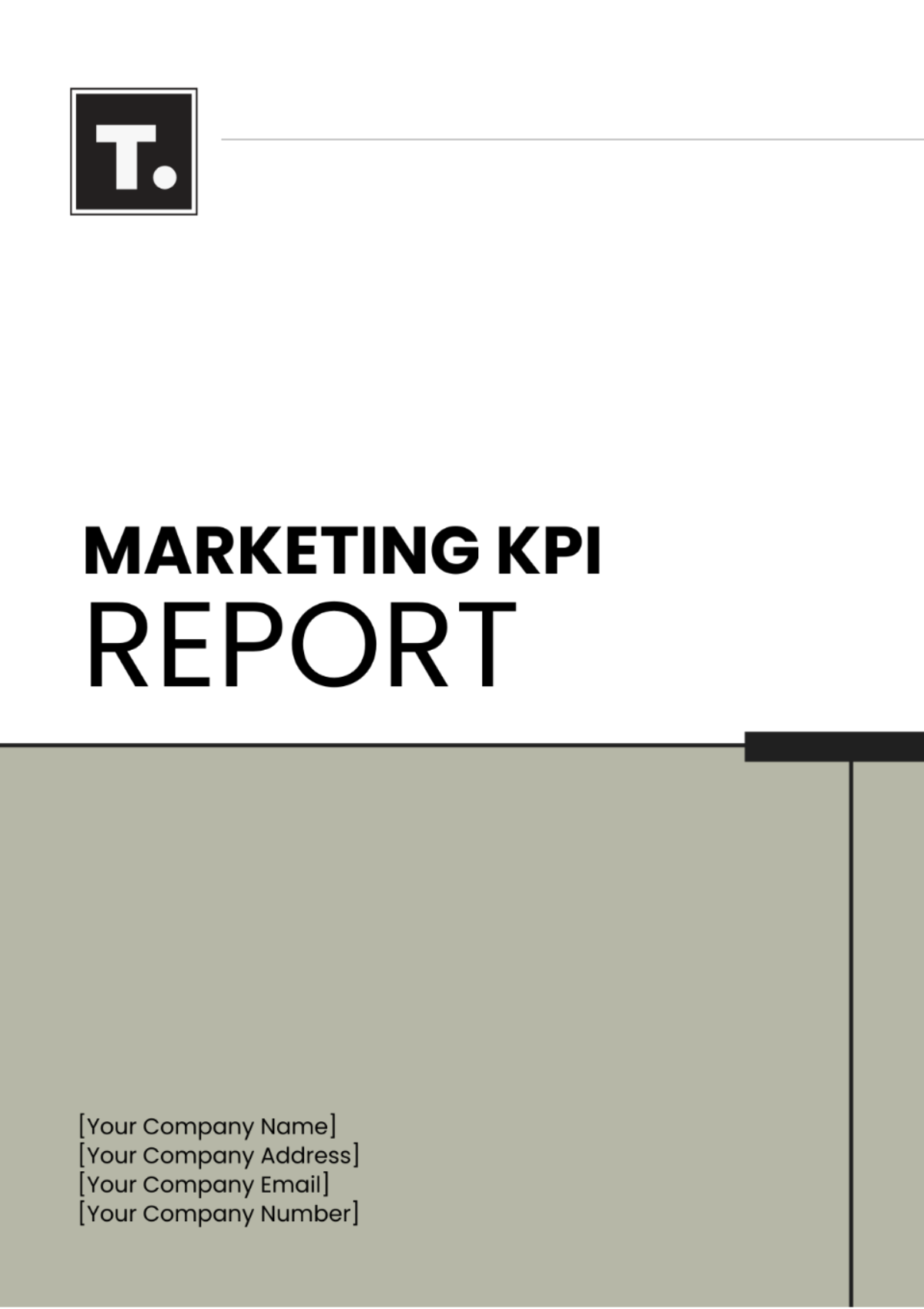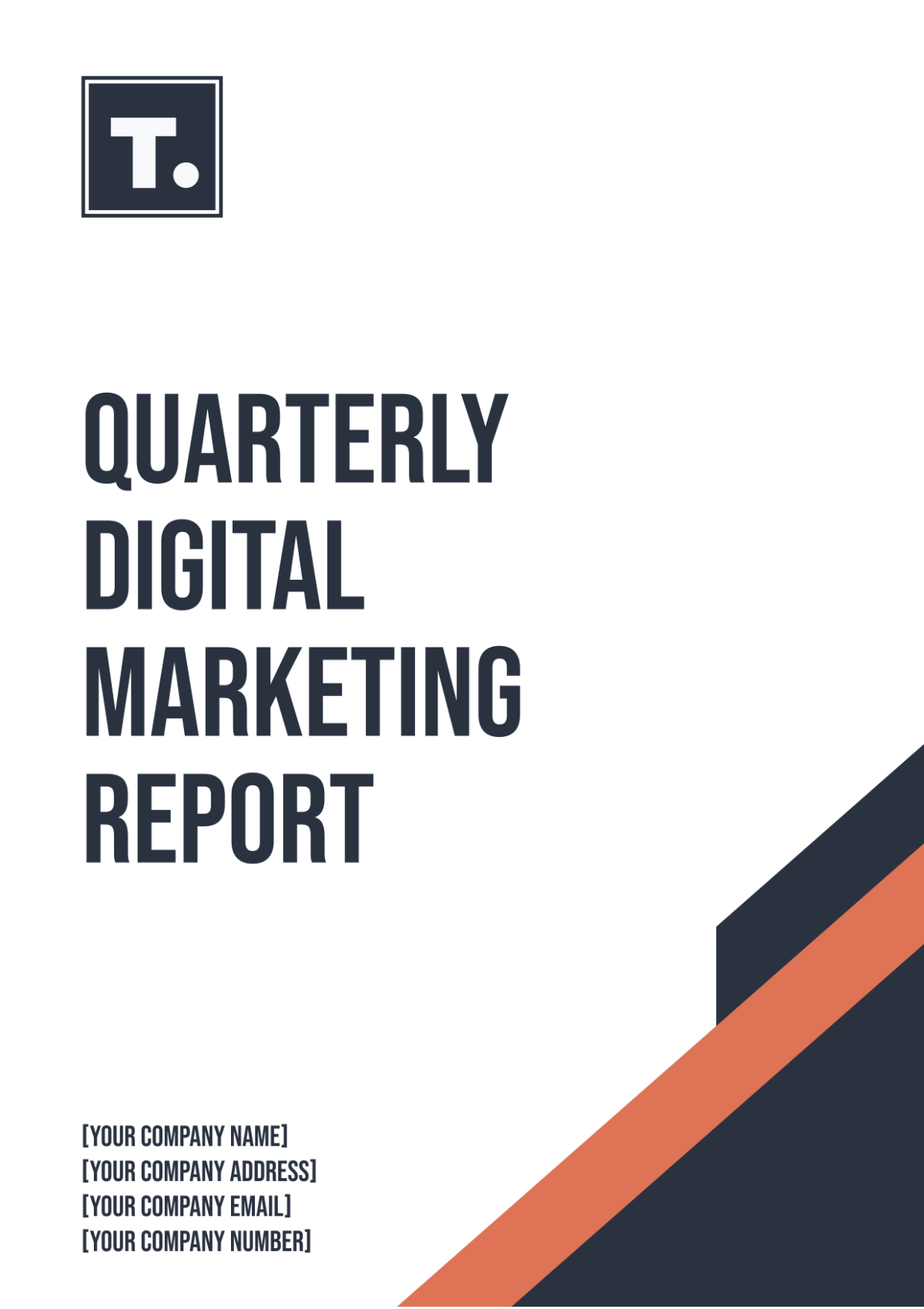Marketing Web Analytics Report
I. Executive Summary
A. Overview of Report Objectives
This report is designed to provide an in-depth analysis of [Your Company Name] website's performance metrics over the last quarter, with a focus on understanding traffic patterns, user behavior, and conversion outcomes. The report analyzes key areas to refine marketing strategies, aiming to enhance engagement, conversion rates, and resource allocation.
B. Key Findings and Insights
The website recorded a [00]% increase in overall traffic, primarily due to enhanced organic search performance and successful social media campaigns. Despite traffic growth, the conversion rate stayed at [00]%, highlighting optimization opportunities. Meanwhile, a slight drop in the bounce rate suggests recent content improvements are engaging users more.
C. Summary of Recommendations
To address the stagnation in conversion rates, it is recommended to initiate A/B testing on key landing pages to identify and implement the most effective design and messaging strategies. Optimizing the paid search strategy by prioritizing top keywords and cutting low-yield ad spend can boost ROI. Additionally, ramping up social media ads, especially on high-engagement platforms like Instagram, can enhance brand visibility and attract qualified traffic.
II. Website Performance Overview
A. Total Website Traffic
Unique Visitors
The website attracted 250,000 unique visitors in the last quarter, representing a [00]% growth from the previous period. The increase, driven by better organic search traffic and new quality content, shows the site is reaching a broader audience and attracting new users.
Page Views
The total number of page views reached 750,000, with an average of 3 pages viewed per session. This metric shows that users engage with multiple content pieces per visit, indicating content relevance and user interest. High page views also suggest effective internal linking and content distribution.
Bounce Rate
The bounce rate decreased slightly to [00]%, reflecting an improvement in the initial user experience and content quality. A lower bounce rate indicates engaging content, reducing immediate exits. Refining content and improving the user interface can further decrease the bounce rate and boost site performance.
B. Traffic Sources
Organic Search
Organic search accounted for [00]% of total traffic, reinforcing its position as the largest and most consistent source of visitors. SEO efforts boost visibility and drive high-converting traffic.
Paid Search
Paid search contributed [00]% to the total traffic, reflecting the effectiveness of targeted ad campaigns. Rising CPC shows more competition, needing better keyword bidding and ad strategy. Still, paid search is valuable for traffic, especially with optimized landing pages.
Direct Traffic
Direct traffic made up [00]% of the total visits, indicating a strong brand presence and loyalty among returning users. This consistent flow of direct traffic highlights the effectiveness of brand-building efforts, such as email marketing and customer retention initiatives. Ensuring that returning visitors have a seamless and rewarding experience is crucial for maintaining this valuable traffic source.
Referral Traffic
Referral traffic accounted for [00]% of total visits, with the majority of referrals coming from industry-related blogs and partner websites. Referral sources are vital for attracting interested audiences. Strengthening and expanding these networks can boost traffic and reach new customers.
Social Media Traffic
Social media platforms generated [00]% of the total traffic, with Instagram and LinkedIn leading the way. The rise in social media traffic from targeted ads and influencer partnerships shows their campaign success. Though still a smaller overall traffic portion, it's increasingly crucial for brand awareness and engagement.
C. User Engagement Metrics
Average Session Duration
The average session duration increased to 2 minutes and 45 seconds, indicating that visitors are spending more time exploring the site. Recent content updates and UX enhancements are resonating with users, leading to longer session durations, higher engagement, and better conversion potential.
Pages Per Session
On average, users viewed 3 pages per session, demonstrating that the website is effectively guiding visitors through multiple pieces of content. High engagement shows users find the content valuable, boosting conversion rates. Optimizing internal links and content pathways can sustain or improve this.
Returning vs. New Visitors
Returning visitors made up [00]% of the traffic, a strong indication of brand loyalty and customer satisfaction. New visitors made up [00]% of traffic, showing our outreach success. Balancing new and returning users is crucial for growth..
III. Conversion Analysis
A. Overall Conversion Rate
The overall conversion rate held steady at [00]%, indicating that while traffic increased, the effectiveness of converting visitors into customers has plateaued. This steady rate highlights a need for targeted optimization efforts to enhance the user journey and improve conversion outcomes.
B. Goal Completions
Sales/Transactions
Sales transactions accounted for [00]% of total conversions, translating to 4,500 completed purchases this quarter. Despite an increase in total traffic, conversion growth has been modest, suggesting potential areas for improving the checkout process and sales funnel.
Lead Generation
Lead generation efforts resulted in a [00]% conversion rate, with 1,250 new leads acquired through forms and content offers. The majority of these leads came from high-value downloadable content and webinar registrations, indicating effective lead nurturing strategies.
Email Sign-Ups
Email sign-ups represented [00]% of conversions, adding 500 new subscribers to the email list. This slight decline compared to previous periods suggests a need for more compelling sign-up incentives and promotional efforts to boost subscription rates.
C. Conversion by Traffic Source
Organic Search
Organic search drove [00]% of total conversions, demonstrating the high quality and intent of traffic from this source. Continued investment in SEO and content optimization is essential for maintaining and enhancing these conversion rates.
Paid Search
Paid search contributed [00]% of conversions, with higher conversion rates but increased cost per click. Optimizing ad spend and targeting strategies can help maximize the return on investment and improve overall efficiency.
Referral Traffic
Referral traffic generated [00]% of conversions, with particularly high rates from industry-related blogs and partner sites. Strengthening these referral relationships and exploring new partnerships can further increase conversion opportunities.
Social Media
Social media platforms accounted for [00]% of conversions, with Instagram showing the highest performance. Expanding social media campaigns and leveraging user-generated content can enhance engagement and drive more conversions.
D. Conversion Funnel Analysis
Entry Points
The majority of conversions originated from the homepage and targeted landing pages, indicating effective initial engagement strategies. Optimizing these entry points to align with user expectations can further enhance conversion rates.
Drop-Off Points
Significant drop-offs were noted at the pricing and checkout stages, suggesting potential friction in the purchasing process. Addressing these issues through streamlined checkout design and clearer pricing information can reduce abandonment rates.
Funnel Completion Rate
The funnel completion rate was [00]%, aligning with industry standards but leaving room for improvement. Enhancing user experience and minimizing obstacles in the conversion path can increase the percentage of users who complete the funnel.
IV. Content Performance
A. Top Performing Pages
Page Views
The homepage, product pages, and blog section were the top-performing pages, collectively accounting for [00]% of total page views. These pages are crucial in driving user engagement and should be continually optimized for relevance and user experience.
Average Time on Page
Visitors spent an average of 3 minutes on top-performing pages, indicating strong content engagement. Longer time on page suggests that users find the content valuable and are willing to spend more time interacting with it.
Bounce Rate by Page
The bounce rate for top-performing pages was [00]%, lower than the site average. This reduction indicates that these pages are effectively capturing user interest and encouraging further exploration of the site.
B. Blog Performance
Popular Blog Posts
The most popular blog posts were related to industry trends and practical how-to guides, each receiving over 10,000 views. These topics resonate well with the audience, driving significant traffic and engagement.
Engagement Metrics
Blog posts achieved an average of 5 minutes time on page and a [00]% bounce rate, reflecting high reader engagement. The depth and relevance of the content contribute to these strong engagement metrics.
Conversion Rates from Blog
The blog contributed a conversion rate of [00]%, primarily through lead generation and content downloads. This performance highlights the blog’s role in nurturing leads and driving valuable actions.
C. Landing Page Analysis
Traffic to Landing Pages
Targeted landing pages received [00]% of total site traffic, driven by specific campaigns and promotions. This traffic share demonstrates the effectiveness of landing page strategies in capturing user interest.
Conversion Rates by Landing Page
Conversion rates on landing pages averaged [00]%, higher than the site average. This indicates that landing pages are well-designed to drive user actions, such as sign-ups and purchases.
A/B Testing Results
A/B testing revealed that landing pages with clearer calls-to-action and simplified designs performed [00]% better in conversion rates. These insights will guide future optimization efforts to enhance page effectiveness.
Landing Page A/B Testing Results
Landing Page Version | Conversion Rate | Key Differences |
|---|---|---|
A | [00]% | Complex design, multiple CTAs |
B | [00]% | Simplified design, single CTA |
V. SEO Performance
A. Organic Search Traffic
Total Organic Traffic
Organic traffic grew by [00]% this quarter, making it the primary driver of website visits. This increase is a result of improved SEO practices, including better keyword targeting and content optimization.
Branded vs. Non-Branded Keywords
Branded keywords accounted for [00]% of organic traffic, while non-branded keywords contributed [00]%. This balance indicates strong brand recognition as well as effective targeting of new, relevant search queries.
B. Keyword Rankings
Top Ranking Keywords
The website ranks in the top 3 positions for 20 high-value keywords, leading to increased visibility and traffic. Maintaining these rankings is critical for ongoing organic search success and competitive advantage.
Keyword Movement Over Time
Several targeted keywords improved by an average of 5 positions in search engine results. This upward movement reflects successful SEO efforts and the effectiveness of recent content updates.
C. On-Page SEO Analysis
Meta Tags and Descriptions
All key pages have optimized meta tags and descriptions, which have contributed to improved click-through rates (CTR) from search results. Ongoing refinement of these elements can further enhance search visibility and user engagement.
Header Tags
Proper use of header tags across the site has improved content structure and readability. This practice not only benefits SEO but also enhances user experience by making content easier to navigate.
Internal Linking Structure
The internal linking strategy has been strengthened, with strategic links guiding users to relevant content. Effective internal linking helps distribute page authority and improve overall site navigation.
D. Backlink Analysis
Total Backlinks
The site acquired 1,500 new backlinks this quarter, marking a [00]% increase from the previous period. These new links contribute to improved domain authority and search engine rankings.
Referring Domains
Referring domains increased by [00]%, with high-quality links from industry-related sites. Expanding the network of referring domains can further boost the site’s authority and search performance.
Anchor Text Distribution
Anchor text distribution is diverse, including branded, keyword-rich, and natural phrases. This variety helps maintain a balanced and healthy backlink profile, which is beneficial for SEO.
Backlink Analysis
Metric | Current Value | Previous Value | % Change |
|---|---|---|---|
Total Backlinks | [00] | [00] | [00]% |
Referring Domains | [00] | [00] | [00]% |
Anchor Text Types | Balanced | Balanced | - |
VI. Paid Advertising Performance
A. Pay-Per-Click (PPC) Campaign Analysis
Total Clicks and Impressions
PPC campaigns generated 50,000 clicks and 1 million impressions, maintaining strong visibility. Although impressions remained consistent, the click-through rate (CTR) improved to [00]% due to optimized ad targeting.
Click-Through Rate (CTR)
The overall CTR for PPC ads was [00]%, reflecting the effectiveness of recent ad copy and targeting improvements. A higher CTR indicates that the ads are resonating well with the target audience.
Cost Per Click (CPC)
The average CPC increased to $[00], reflecting higher competition in the targeted keywords. Adjusting bidding strategies and focusing on high-performing keywords can help manage costs more effectively.
Return on Ad Spend (ROAS)
The ROAS for PPC campaigns was 3:1, meaning every dollar spent generated three dollars in revenue. This positive return highlights the effectiveness of the current PPC strategy, though optimization opportunities remain.
B. Social Media Advertising Performance
Impressions and Engagement
Social media ads generated 500,000 impressions and 25,000 engagements, demonstrating strong user interaction. Effective targeting and engaging ad creatives have contributed to these positive metrics.
Conversion Rates
Social media ads yielded a conversion rate of [00]%, with Instagram outperforming other platforms. Increased investment in Instagram and similar high-performing platforms can further enhance conversion rates.
Ad Spend vs. Revenue
The total ad spend on social media was $[00], resulting in $[00] in revenue, achieving a 3:1 ROAS. This performance underscores the effectiveness of the social media strategy in driving profitable results.
C. Display Advertising Performance
Impressions and Clicks
Display ads achieved 750,000 impressions and 7,500 clicks, resulting in a [00]% CTR. Although the CTR is slightly below average, creative adjustments could boost performance.
Conversion Rates
The conversion rate from display ads was [00]%, reflecting the lower intent typically associated with this channel. Enhancing ad targeting and implementing retargeting strategies could improve conversion rates.
View-Through Conversions
View-through conversions accounted for [00]% of total display ad conversions, highlighting the impact of multi-channel exposure. This insight emphasizes the importance of a holistic advertising approach.
PPC and Social Media Performance
Metric | PPC | Social Media |
|---|---|---|
Total Clicks | [00] | [00] |
Impressions | [00] | [00] |
CTR | [00] | [00] |
CPC | [00] | [00] |
ROAS | [00] | [00] |
Conversion Rate | [00] | [00] |
VII. Social Media Performance
A. Social Media Traffic Overview
Traffic by Platform
Social media platforms collectively drove [00]% of total site traffic, with Instagram and LinkedIn as the primary sources. This traffic distribution highlights the effectiveness of tailored content and targeted campaigns on these platforms.
Engagement Metrics
Engagement rates on social media posts averaged [00]%, with the highest interaction on posts featuring user-generated content and interactive elements. This high engagement underscores the importance of authentic and engaging social media content.
B. Social Media Conversion Rates
Conversion by Platform
Instagram led in conversions, contributing [00]% of social media-driven conversions, while LinkedIn excelled in B2B lead generation. Platform-specific strategies can further enhance these conversion rates.
Campaign Performance
Recent Instagram campaigns saw a [00]% increase in traffic and conversions, driven by effective visual storytelling and influencer partnerships. LinkedIn campaigns also yielded high-quality leads, underscoring the importance of platform-specific strategies.
C. Social Media Engagement
Likes, Shares, Comments
Social media posts averaged 1,000 likes, 200 shares, and 150 comments, reflecting strong audience interaction. Posts with educational content and visual elements performed particularly well.
Follower Growth
The brand’s social media following grew by [00]% this quarter, adding 5,000 new followers across platforms. This growth is attributed to consistent content posting and targeted advertising efforts.
Engagement Rate
The overall engagement rate was [00]%, surpassing industry benchmarks. This high engagement rate indicates the effectiveness of the current social media strategy in resonating with the audience.
Social Media Engagement Metrics
Platform | Likes | Shares | Comments | Follower Growth |
|---|---|---|---|---|
[00] | [00] | [00] | [00] | |
[00] | [00] | [00] | [00] |
VIII. Mobile Analytics
A. Mobile vs. Desktop Traffic
Traffic Distribution
Mobile devices accounted for [00]% of total traffic, with desktop devices making up the remaining [00]%. This shift underscores the necessity of optimizing mobile user experiences to cater to the growing mobile audience.
Conversion Rates by Device
Mobile conversion rates were [00]%, compared to [00]% on desktop devices, indicating a need for improved mobile site optimization. Addressing mobile usability issues can help bridge this conversion gap.
B. Mobile User Behavior
Average Session Duration
Mobile users spent an average of 2 minutes per session, while desktop users averaged 3 minutes. Enhancing mobile content and navigation could increase engagement and session duration.
Pages Per Session
Mobile users viewed an average of 2.5 pages per session, compared to 3.5 pages for desktop users. Streamlining the mobile user journey and improving site speed can help increase the number of pages viewed per session.
C. Mobile Site Performance
Page Load Time
The average page load time on mobile was 3 seconds, slightly above the recommended 2 seconds. Reducing page load times through optimization techniques can improve user experience and reduce bounce rates.
Mobile-Specific Issues
Identified mobile-specific issues include inconsistent formatting and slow-loading images. Addressing these issues will enhance the mobile user experience and drive higher engagement and conversions.
IX. Recommendations
A. Strategic Adjustments for Traffic Growth
SEO Enhancements
To sustain and further boost organic traffic, focus on expanding the keyword strategy to include long-tail keywords and emerging trends within the industry. Regularly updating existing content and optimizing meta tags can also improve search engine rankings and drive more qualified traffic.
Content Marketing Initiatives
Invest in creating high-quality, engaging content tailored to your target audience’s interests and needs, such as in-depth guides, video content, and interactive tools. Implementing a content distribution strategy across social media and email channels can amplify reach and drive additional traffic.
B. Optimizing Conversion Rates
User Experience Improvements
Enhance the user experience by simplifying navigation, reducing page load times, and ensuring mobile responsiveness. Conduct user testing to identify and address pain points in the conversion funnel, which can help reduce drop-offs and increase overall conversion rates.
A/B Testing Strategies
Implement A/B testing for key elements such as call-to-action buttons, landing page designs, and promotional offers. Analyzing the results of these tests will provide valuable insights into what drives higher engagement and conversions, allowing for data-driven optimization.
C. Enhancing Paid Advertising Efficiency
Keyword Optimization
Refine keyword targeting by focusing on high-converting terms and reducing spend on underperforming keywords. Regularly reviewing and adjusting bids based on performance metrics can improve cost-efficiency and maximize return on ad spend (ROAS).
Creative and Messaging Refinements
Continuously test and iterate on ad creatives and messaging to ensure they resonate with your target audience. Effective ad copy, compelling visuals, and clear calls-to-action can enhance engagement and drive better performance across paid advertising campaigns.
D. Strengthening Social Media Strategy
Targeted Campaigns
Develop targeted social media campaigns that leverage audience insights and platform-specific features to enhance relevance and engagement. Utilizing advanced targeting options and personalized content can drive higher conversion rates and strengthen brand loyalty.
Engagement Tactics
Increase engagement by actively interacting with followers, responding to comments, and fostering community discussions. Hosting live events, Q&A sessions, and interactive polls can further boost interaction and build a stronger connection with your audience.
X. Conclusion
The analysis reveals significant growth in website traffic driven by improved SEO and content marketing efforts, though conversion rates have remained stable. Key areas for enhancement include optimizing the user experience, refining advertising strategies, and expanding content initiatives to drive further growth and engagement.



